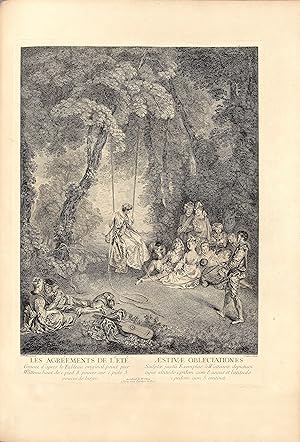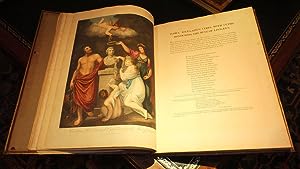nature, Ancien ou d'occasion (Plus de 209 000 résultats)
Type d'article
- Tous les types d'articles
- Livres (200 198)
- Magazines & Périodiques (3 018)
- Bandes dessinées (89)
- Partitions de musique (71)
- Art, Affiches et Gravures (3 579)
- Photographies (762)
- Cartes (221)
-
Manuscrits &
Papiers anciens (1 941)
Etat
- Tous
- Neuf
- Ancien ou d'occasion
Reliure
Particularités
- Edition originale (46 170)
- Signé (8 161)
- Jaquette (34 593)
- Avec images
- Sans impression à la demande (209 862)
Livraison gratuite
Pays
Evaluation du vendeur
-
Carte nouvelle de la partie de l'Ouest de la Loüisianne faitte sur les observations, recherches, et decouvertes de Mr Benard de la Harpe l'vn des Commandants au d(it) Paÿs faitte sur les observations, recherches, et decouvertes de Mr Benard de la Harpe l'vn des Commandants au d(it) Paÿs
Edité par Dépôt des cartes et plans de la Marine, [Paris], 1722
Vendeur : Arader Books, New York, NY, Etats-Unis
Carte Edition originale
No binding. Etat : Near fine. First. THE MOST IMPORTANT 18TH-CENTURY MAP OF THE AMERICAN SOUTHWEST. Manuscript map in ink and watercolor of the southern United States and northern Mexico. [Paris: ca. 1722-1725.] Two joined sheets (22 5/8" x 36 3/4", 575mm x 933mm; 31 3/4" x 45 3/4" framed). Some creases throughout, with marginal tanning and soiling. A couple of spots of foxing. Jean-Baptiste Bénard de La Harpe (1683-1765) came from France in 1718 to map and to set up trading posts in present-day Texas, Oklahoma and Arkansas. Whereas the Northeast was the site of contention between the French and the British, the contest in the Southwest was between France and Spain. Using New Orleans as his base, La Harpe forged connections with native Americans between the Arkansas River, which cuts through Kansas, Oklahoma and Arkansas before joining the Mississippi; and the Red River, which describes the border between eastern Oklahoma and Texas. The map is particularly detailed in its chronicling of native American settlements west of Texas: the Mexican states of Chihuahua and Sonora, New Mexico, Arizona and California into Baja California. La Harpe is particularly careful in his indications of the nature of these settlements: "Indiens Gentils" and "Chretiens," sites of silver mines, capitals/presidios and of ruined or abandoned villages. After several years of exploration as well as gathering materials from other explorers, La Harpe returned to France in 1723, and it is in the years immediately following that this map is presumed to have been made. Copied by the Dépôt des cartes et plans de la Marine (the only other known copy is in the Bibliothèque nationale de France; that is attributed to Jean-Baptiste Bourguignon d'Anville), the relationship between La Harpe's original and the present item is unclear. Certain points appear on our map that are not on the BnF example (and vice-versa), so both appear to be independent copies. Ours extends further east than the BnF copy, which stops before Florida. The BnF copy extends much further north and west, which in our copy is obscured by the legend. By comparison to printed maps of the period and even well beyond, these manuscript maps are far more accurate and detailed. Perhaps the Dépot des cartes held this information close for proprietary or military reasons. Nonetheless, the Spanish would go on to dominate the American South (La Harpe conducted the surrender of Pensacola, visible only on our map, to the Spanish) freeing the French to focus on their territorial struggles with the British in the North and East. From the collection of the late great cartographic historian Dr. Seymour I. Schwartz (his sale, Sotheby's New York, 28 June 2018, lot 145).
-
Mars and the Imagination: A Record of Our Relationship with the Red Planet
Vendeur : Manhattan Rare Book Company, ABAA, ILAB, New York, NY, Etats-Unis
Etat : Very Good. Mars and the Imagination: A monumental and carefully curated collection of over 900 works of both fiction and non-fiction tracing the history of our understanding and obsession with the Red Planet. To begin exploring the collection, please see our description available on this page under "View the Collection". Background Mars and the Imagination was conceived and assembled by the experienced collector David Wenner - whose comprehensive collection on the history of physics now resides at the Niels Bohr Library of the American Institute of Physics - and represents much more than a "collection" of works. Through his years of research and study, Wenner was able to unearth important and previously unrecognized literary and historical texts, making new connections among them. Contextualized in such a way, the items in Mars and the Imagination collectively tell an illuminating story through primary sources that to our knowledge has not been previously attempted. It is the story of our fascination with the Red Planet, a story of our wonder about something that is just out of reach, a story that has revealed as much about us as it has about Mars. Fiction and Non-Fiction For hundreds of years, Mars has been observed by scientists, but lurked tantalizingly on the edge of our ability to truly understand the nature of the planet. It thus became a perfect template for speculation: What are the conditions on Mars? Is it hospitable to life? Are there, or have there ever been, living beings on Mars and if so, are they like us? Superior to us? Threatening to us? Will we ever be able to visit Mars? The approaches to answering these questions have been varied, with both scientific inquiry and imaginative fiction in a continual dialogue of influence on each other. Mars and the Imagination, therefore includes texts by such scientific giants such as Kepler, Huygens, Hooke, and Cassini, but also fiction by literary masters such as Swift, Wells, Asimov, Bradbury, and Clarke. Different Formats, Different Audiences: A Vision of Mars for All The collection includes many specialist textbooks and journal articles written by scientists for fellow scientists, but it striking to witness how discussions of Mars seeped into the public consciousness of each generation. There are many papers from esteemed scientific journals such as Philosophical Transactions of the Royal Society, Comptes Rendus or Nature, but Mars is represented just as thoroughly in more popular publications such as The New Yorker, National Geographic, Life Magazine, and even Playboy. It seemed, at times, that all society had a keen interest in news and speculation about Mars. The collection reflects this - seeing different formats and genres from the same period next to each other underscores the point that wonder about Mars has been part of the zeitgeist of each era, including our own. Rescuing Primary Sources and Preserving the Ephemeral One of the strengths of the collection is the preservation of essential primary source material that might otherwise be lost. Many of the items were published in ephemeral formats such as journals, magazines, or as pulp fiction. They were not designed to last and are extremely difficult to find in collectible condition today. Similarly, many of the more scholarly scientific works were published for a small audience of peers and never existed in large numbers. Mars and the Imagination provides a unique opportunity to see these primary sources in one place, and preserves them for future generations. Beautifully Presented and Exhibit-Ready Most of the items in Mars and the Imagination are safely housed in beautiful custom boxes, with the contents often grouped together by themes and carefully labeled. Thus, the collection is attractively presented and easy to navigate, serving not only as a working library for study and enjoyment, but as an exhibit-ready collection. For a more detailed exhibition of highlights form the collection, please click on the attached P.
-
Le Capital. Traduction de M. J. Roy, entièrement revisée par l'auteur.
Edité par Paris, Maurice Lachatre et Cie, [1872-1875]., 1875
Vendeur : Antiquariat INLIBRIS Gilhofer Nfg. GmbH, Vienna, A, Autriche
Tall quarto (277 x 194 mm). Contemporary black quarter roan, dark brown pebble-grain cloth over boards, green page marker. 2 engraved title pages, 1 engraved portrait frontispiece with autograph, facsimile autograph letter from Marx to the publisher, dated 18 March 1872, with Lachatre's reply to verso, engraved head- and tailpieces. Text in two columns. First edition in French, first issue, a fine presentation copy, inscribed by Marx to the Frankfurt banker Sigmund Schott, with whom Marx exchanged ideas central to his philosophies and work: "Mr Sigmund Schott, de la part l'auteur, Londres, 3 Novembre 1877" to the first engraved title page. Presentation copies of Capital are exceptionally rare, with only seven others having been offered at auction in the last 60 years, just two of those being the first edition in French as here. Sigmund Schott was a German bank director and journalist. He was also a literary critic, bibliophile, and corresponded with some of the most important intellectual figures of the epoch. In certain editions of Marx's correspondence, Schott was misidentified as the German politician (1818-1895), with whom he shared the same name. As a result, the importance of the relationship between the young banker and the philosopher has perhaps been underexposed. Schott and Marx wrote to one another on a number of occasions over several months, and in the letter that originally accompanied the present volume - and bears the same date as the inscription: 3 November 1877 - Marx details his approach to constructing Capital. "Dear Sir," Marx begins. "My best thanks for the packages. Your offer to arrange for other material to be sent to me from France, Italy, Switzerland, etc. is exceedingly welcome, although I feel reluctant to make undue claims on you. I don't at all mind waiting, by the by, nor will this in any way hold up my work, for I am applying myself to various parts of the book in turn. In fact, privatim, I began by writing Capital in a sequence (starting with the 3rd, historical section) quite the reverse of that in which it was presented to the public, saving only that the first volume - the last I tackled - was got ready for the press straight away, whereas the two others remained in the rough form which all research originally assumes." Marx then goes on to mention the volume now offered: "I enclose a photograph herewith, because the copy of the French edition that goes off to you at the same time as this letter only contains a very far from flattering likeness done from a London photograph by a Parisian artist. Your most obedient Servant, Karl Marx." This letter, so frequently referenced in critical treatments of Capital, not only sheds light on the genesis of one of the most significant philosophical works to emerge in the last two centuries, but also underscores the author's openness and perhaps even his humour. Additionally, it offers an important contextual background for the presentation copy at hand. Given the nature of other examples of correspondence between the two men, it would seem that Schott and Marx regularly exchanged ideas pertaining to banking and social economy. In a letter sent from London, and dated 29 March 1878, Marx wrote to Schott: "I have, though somewhat belatedly, obtained Volume IV (Industrieactien) of the Saling, to which you so kindly drew my attention. I did not wish to reply to your letter until I had at length had time to run through the thing, and have found it very useful Finally, I have one more thing to ask of you, namely to be so kind, provided it is not too time-consuming, as to let me have a list of the names of Perrot's published writings on the subject of joint-stock companies, etc." Given the tenor of this letter, it would seem that Marx quite relied on Schott for information relating to the financial theories of the day, and that Schott was eager to supply Marx with literature relevant to his work. Le Capital was published in France in 44 "livraisons" between August 1872 and May 1875. Marx began revising Capital for the second German edition in December 1871, which was also the month in which Lachâtre agreed to publish a French edition. In January 1872 Marx recruited Joseph Roy to prepare a French translation and concluded a publishing agreement with Lachâtre. As well as making important revisions for the second German edition, Marx began "to revise, indeed rewrite, the translation" (Draper, p. 174) over the next three years. While the second German edition was published in 1873, Marx continued to exert strict control over the French edition, making additions and corrections to the galley proofs for the parts even as they were being published (Draper, p. 190). He was very clear about its unique value as distinct from the second German edition and strongly advised that even those familiar with the German language editions consult the French edition for further accuracy. For this reason these changes were "taken into account when at length the first English translation, by Samuel Moore and Edward Aveling, appeared in London, in 1887, four years after Marx's death, under the editorship of Engels" (PMM). When the final fascicule was printed in November 1875, the complete set was published in 10,000-11,000 copies. From certain indications found in the correspondence of Marx, it seems likely that the French government, who must have frowned upon the appearance of Das Kapital in French, tried to prevent its publication, which for a certain time was interrupted by the authorities. When the publication was finally completed, rumours abounded that its sale was to be forbidden and the publisher Lachâtre hesitated to sell copies. As noted, any presentation copy of Capital is exceedingly rare. - The volume present here ranks among the finest of these presentation copies. The correspondence surrounding it yields a particularly unique and significant sense of historical context, offering an important point of association related to one o.
-
A MAGNIFICENT ARCHIVE OF ORIGINAL MATERIAL: ORIGINAL DRAWINGS, WATERCOLORS, AND PROOFS FOR JARDINE S MAGNUM OPUS THE BRITISH SALMONIDAE
Vendeur : Arader Galleries Drawings & Watercolors, New York, NY, Etats-Unis
Hardcover. Etat : Very Good. The Sir William Jardine archive is a comprehensive collection encompassing several elements: a group of seven clamshell boxes containing 57 prints, drawings, and watercolors on paper prepared for British Salmonidae; an album of nature sketches with landscape compositions designed for Jardine s printed works, and Jardine s own copy of the exceedingly rare British Salmonidae. Together this archive is a visual story of creating this scientific and artistic feat celebrating sport fishing. The three parts of this remarkable archive are described in full on the following pages. A MAGNIFICENT ARCHIVE OF ORIGINAL MATERIAL: ORIGINAL DRAWINGS, WATERCOLORS, AND PROOFS FOR JARDINE S MAGNUM OPUS THE BRITISH SALMONIDAE. 1839-1841 57 exceptionally fine prints, drawings, and watercolors on paper. A fine and important collection relating to one of the finest of salmonid works and illustrating the artistic history of Jardine s monograph from conception to completion. This archive comprises hand-colored engraved plates, some with variant coloring, original pencil drawings, original watercolors, intermediary states of the plates with engraved fish and watercolor backgrounds, uncolored proofs of the plates on India paper mounted, hand-colored proof plates inscribed to the colorist Bayfield, and related drawings and engravings, all mounted. [WITH]: JARDINE, Sir William (1800-1874). Sketches from Nature by W. Jardine Bart. 1841 . Folio (19 x 13 1/4 inches). EXCEPTIONALLY FINE ALBUM OF 37 ORIGINAL WATERCOLOR AND 37 PENCIL DRAWINGS BY JARDINE depicting highland and lowland Scottish scenery sketched by Jardine on his fishing tours, including his Sutherland tour, the Tweed and his home territory of Dumfriesshire and the Solway Coast, tipped-in to an album, mounted one and two to a page (9 loose), with his manuscript captions and dates in ink below each. Contemporary half red morocco, tan embossed cloth, gilt (a little scuffed at the edges). Provenance: According to a note signed by Christopher T. Dalgety, loosely inserted: Sir William Jardine (1800-1874); his eldest daughter Jane Home Jardine; her son William Jardine Herries Maxwell (1852 1933), of Munches in Buittle (both sons killed in action at Gallipoli in 1915); Munches estate sale ca 1945; Christopher Thomas Dalgety (1907-1980), an ornithologist and explorer in the Arctic in the 1920s and 1930s, his sale Bonhams Edinburgh, 18th May 2016, lot 103. [WITH]: JARDINE, Sir William (1800-1874). British Salmonidae. Edinburgh: W.H.Lizars, 1839-1841. 2 parts (all published) in one volume. Folio (27 2/8 x 20 inches). 12 EXCEPTIONALLY FINE hand colored engraved plates by Lizars after Jardine (laid down on linen), each with accompanying leaf of letterpress text, three engraved vignettes, including one hand-colored. Modern half brown morocco original brown cloth boards. Provenance: According to a note signed by Christopher T. Dalgety, loosely inserted: Sir William Jardine (1800-1874); his eldest daughter Jane Home Jardine; her son William Jardine Herries Maxwell (1852 1933), of Munches in Buittle (both sons killed in action at Gallipoli in 1915); Munches estate sale ca 1945; Christopher Thomas Dalgety (1907-1980), an ornithologist and explorer in the Arctic in the 1920s and 1930s, his sale Bonhams Edinburgh, 18th May 2016, lot 103. Sir William Jardine, was the 7th Baronet of Jardine Hall near Lockerbie, Scotland. Jardine was the leading authority on salmon and trout in the British Isles. An excellent sportsman, his preeminent knowledge of the species was intimate and personal, and his expertise in the field was so noted that in 1860 he was appointed to the Royal Commission on the Salmon Fisheries of England and Wales. Jardine, perhaps best known for his Naturalist s Library series, was also an ardent angler. His estates were in the fertile fishing areas near the rivers Annan and Tweed.CONTACT GALLERY FOR FULL CATALOGUE Loca: 6.5V.3D, 6.3BH.12D, 6.3BH.12C.
-
George Washington s "Justice and Public Good" Letter, Written Just Before Becoming the First President of the United States
Edité par Mount Vernon, Virginia, 1789
Vendeur : Seth Kaller Inc., White Plains, NY, Etats-Unis
No binding. Etat : Very Good. Autograph Letter Signed, to Frederick Phile, March 15, 1789, Mount Vernon, Virginia. Washington's retained copy, written on blank leaf of Phile's letter to him as evidenced by partial address on verso: "[George] Washington / [Moun]t Vernon." 1 p., 8 x 6 1/4 in. "I will go into Office totally free from pre-engagements of every nature whatsoever, and in recommendations to appointments will make justice & the public good, my sole objects."The still unofficial President-elect George Washington writes in March 1789 about his determination to go into the presidency with no pre-existing commitments, ready to purely judge the"justice & the public good" of every appointment. He would extend that sentiment to every aspect of his presidency.Washington referred to the standard of "justice & the public good" only a few times, and the present letter is the only example we know of that has ever reached the market. Complete Transcript Mount Vernon Mar 15th 1789Sir, Yesterdays Post brought me your favor of the 7th - In answer to it, I will briefly observe that if the Administration of the New Government should inevitably fall upon me that I will go into Office totally free from pre-engagements of every nature whatsoever, and shall in recommendations to appointments ^will^ make justice & the public good, my sole objects. Resolving to pursue this rule, invariably -I shall[1] add nothing more on the subject of your application until the time shall arrive when the merits ^and justice^ of every claimt shall be most [?]actually attended to so far as the matter depends upon ^[?] appear - when, so far as the matter shall depends upon me, the principles above mentioned shall to the best of my judgment^ have their full operation. I am Sir, Your Most Obedt and most Hble Ser. Go Washington[File Note on verso in Washington's hand:]To Doctr Fred: Phile / 15th Mar. 1789See related George Washington Inaugural Address Collection here. Historical BackgroundOn June 21, 1788, the United States Constitution became the official framework for the government of the United States when New Hampshire became the ninth state to ratify it. Four days later, Virginia ratified it, and a month later, New York became the eleventh state to ratify the Constitution.[2]Between mid-December 1788 and mid-January 1789,[3] either by popular vote or by the state legislature, ten states chose a combined total of seventy-three electors.[4] On February 4, sixty-nine of those electors cast two ballots each in their states for the President and Vice President of the United States. The legislatures counted the votes and sent their tallies to the new federal Congress, which was expected to convene at Federal Hall in New York on March 4, 1789. Although both houses initially convened on that date, the House of Representatives did not achieve a quorum until April 1, and the Senate did not reach a quorum and organize itself until April 6. Later that day, the Senate, in the presence of the House, counted the electoral votes. Each of the sixty-nine present electors gave one vote to George Washington, making his election to the presidency unanimous. Thirty-four electors voted for John Adams, thereby selecting him as Vice President.[5]The Senate appointed Secretary of the Continental and Confederation Congresses and keeper of the Great Seal of the United States Charles Thomson to notify George Washington of his election as President.Well before the official counting, Washington had received reports from various sources making it clear that his election was a virtual certainty, and Washington began making preparations. Charles Thomson traveled to Virginia with official notice of Washington's election, arriving at Mount Vernon on April 14. Two days later, Washington left Mount Vernon for New York City, the temporary capital of the fledgling nation. Thomson accompanied him on the return journey. Washington arrived in New York City amid great fanfare on April 23 and w. (See website for full description). Autograph Letter Signed.
-
On the Origin of Species by Means of Natural Selection, or the Preservation of Favoured Races in the Struggle for Life.
Edité par John Murray, London, 1859
Vendeur : Raptis Rare Books, Palm Beach, FL, Etats-Unis
Edition originale
First edition of "certainly the most important biological book ever written" (Freeman), one of 1250 copies. Octavo, bound in original cloth, half-title, one folding lithographed diagram, without advertisements. In very good condition with cracks to inner hinges and a touch of shelfwear. Housed in a custom clamshell box. A fine example of this landmark work. Darwin â revolutionized our methods of thinking and our outlook on the natural order of things. The recognition that constant change is the order of the universe had been finally established and a vast step forward in the uniformity of nature had been takenâ (PMM 344). â Without question a watershed work in the history of modern life sciences, Darwinâ s Origin elaborated a proposition that species slowly evolve from common ancestors through the mechanism of natural selection. As he himself expected, Darwinâ s theory became, and continues to be in some circles, the object of intense controversyâ (American Philosophical Society). â The five years [of Darwinâ s voyage on the Beagle] were the most important event in Darwinâ s intellectual life and in the history of biological science. Darwin sailed with no formal training. He returned a hard-headed man of scienceâ ¦ The experiences of his five years in the Beagle, how he dealt with them, and what they led to, built up into a process of epoch-making importance in the history of thoughtâ (PMM).
-
Autograph Manuscript "Concerning 'The Hoard'". WITH: Autograph Manuscript Genealogical Tree "Kinship of the Half-Elven". WITH: Typed Letter Signed to Eileen Elgar
Edité par n.p., Oxford, 1964
Vendeur : Manhattan Rare Book Company, ABAA, ILAB, New York, NY, Etats-Unis
Manuscrit / Papier ancien Edition originale Signé
Etat : Very Good. First edition. - A MAJOR TOLKIEN AUTOGRAPH MANUSCRIPT ON THE CENTRAL THEMES OF HIS WORK AND CONTAINING A VARIANT HISTORY OF THE FIRST AGE; LIKELY THE MOST SIGNIFICANT MANUSCRIPT IN PRIVATE HANDS -A VISUALLY STUNNING HAND-DRAWN CHART, "KINSHIP OF THE HALF-ELVEN," TRACING THE GENEALOGY FROM FËANOR TO ELROND, ARWEN, AND ARAGORN -A LONG, REVEALING LETTER TO EILEEN ELGAR PRESENTING THE MANUSCRIPTS, REFLECTING ON THE RECENT DEATH OF C.S. LEWIS AND DISCUSSING LITERATURE AND WRITING, INCLUDING A DETAILED ANALYSIS OF HIS MIDDLE-EARTH POEM "FASTITOCALON". "Concerning 'The Hoard'" Manuscript: Responding to Eileen Elgar's letter about the meaning of Tolkien's poem "The Hoard," Tolkien here pens what he calls "a long screed" discussing the poem's themes and its relationship to his writing. Only recently published in The Adventures of Tom Bombadil and Other Verses from the Red Book(1962), "The Hoard" was a bardic poem telling of an ancient elven hoard successively claimed by a dwarf, a dragon, and a man - each of whom is killed in consequence of his feverish greed for the hoard. Tolkien here calls The Hoard "one of the main strands in The Silmarillion," and he explains that this work-in-process "concerns the great hoard of Nargothrond, which contained much of the treasure and works of Elvish art that had been preserved from the wreckage of the Elven-kingdoms and the assaults of the Dark Lord from his unassailable stronghold of Thangorodrim in the North." In endeavoring to give his correspondent a fuller idea of "what my proposed book, The Silmarillion, is about," Tolkien then proceeds to give a substantive account of the fate of this legendary hoard and its three great gemstones, the light-capturing silmarils magically crafted by Fëanor. The story arc and First-Age history Tolkien here charts differs in many subtle ways - especially in its rerouting of the Ruin of Doriath - from that found in The Simarillion and other related accounts of First Age history (e.g. the story of Nauglafring, as published in The Book of Lost Tales). But Tolkien's essay "Concerning 'The Hoard'" is much more than a behind-the-scenes look into "The Hoard". The nature of obsession, discussed so vividly in "Concerning 'The Hoard'", is at the core of Tolkien's most celebrated works, namely: The Hobbit, The Lord of the Rings and The Silmarillion, and "Concerning 'The Hoard'"provides vital insight into the dramatic underpinnings of these works. After explaining in this manuscript how "dark and secret hoards" were originally formed and indicating that such hoards are very often "possessed and guarded by a dragon," Tolkien affirms that such "dragon-hoards were cursed, and bred in men the dragon-spirit: in possessors an obsession with mere ownership, in others a fierce desire to take the treasure for their own by violence and treachery." Beyond the insight such a "dragon-spirit" offers for the immediate analysis of The Silmarillion - where even the noblest of heroes succumb to its obsessive poison and go to extreme lengths to obtain the silmarils - we see the "dragon-spirit" driving the actions surrounding the Arkenstone in The Hobbit and The One Ring in The Lord of the Rings. Tolkien's essay gives new meaning to the dragon Smaug's role in The Hobbit (and the reveling delight he takes in his hoard) and it further helps us understand the basis for Thorin Oakenshield's insatiable avarice and his fixation on recovering a treasure that he had never seen. InThe Lord of the Ringswe see Bilbo's reluctance to relinquish the One Ring and many of the early pages are occupied by Gandolf's explication to Frodo of how the Ring has affected its bearers. And who, after all, is Gollum but one who succumbed entirely to the "dragon-spirit"? A major unpublished essay, "Concerning 'The Hoard'" is a highly important addition to Tolkien's known work. Broadening the characters and events of Middle-earth history, this manuscript affords us insight into Tolkien's evolving conception of the First Age. This manuscript was unknown to Christopher Tolkien at the time he was piecing together The Silmarillion, and one can only imagine the contribution its text might have made to that work. But even beyond its significance for The Silmarillion, this manuscript offers a penetrating view of how Tolkien conceived the "dragon-spirit" that is a driving force in all his major works. Encapsulating as it does the core history and thematic at the heart of Tokien's legendary works, "Concerning 'The Hoard'" is, to the best of our knowledge, the most significant Tolkien manuscript in private hands. "Kinship of the Half-Elven" Genealogical Tree: Tolkien's 1964 letter to Eileen Elgar also included the offered autograph genealogical tree entitled "Kinship of the Half-Elven". Tolkien was in the habit of creating itemized documents to help him keep track of the rich layers of detail present in his complex narrative structures. This particular tree begins with Fëanor in the early days of the First Age and traces his descent through the House of Hador and the House of Bëor to the Third-Age figures - Elrond, Arwen and Aragorn - we encounter inThe Lord of the Rings. The chart is a stunning visual companion to his work, meticulously and stunningly drawn with black, green, and red ink and pencil. Letter to Eileen Elgar: Tolkien's letter of March 5, 1964, presenting the chart and manuscript to Eileen Elgar, begins on a somber note, with Tolkien explaining that he had been through some troubling times, highlighting that "The death of my friend (C.S. Lewis - whom I do not think you have confused with C.D. Lewis) was the first blow." He then discusses "Concerning 'The Hoard', hoping that it will give Elgar a better idea of what "my proposed book, 'The Silmarillion' is all about." The rest of the letter is a detailed discussion of various aspects of writing and publishing: complaining about proofreaders' attempted changes to passages in The Lord of the Rings, an analysis of certain phrases with an explication.
-
An alchemist's handbook, in German. Illustrated manuscript on paper.
Edité par [Germany, ca. 1480/90]., 1480
Vendeur : Antiquariat INLIBRIS Gilhofer Nfg. GmbH, Vienna, A, Autriche
Manuscrit / Papier ancien
Small 4to (140 x 195 mm). 91 leaves, 149 written pages in two hands, the main body of the text complete, up to 29 lines per page, ruled space 85 x 155 mm. Incipit: "In nomine domini amen. Noch dem also gesprochen ist daß alle kunst kunftigk ist von got und ist by im on ende.". Rubrics touched in red, calligraphic initials in red and some with flourishing, 25 watercolour illustrations of scientific apparatus, 10 mathematical and architectural diagrams in pen. 15th century German calf over wooden boards, tooled in blind with vertical rows of hunting scenes within a triple-filet frame, remains of two fore-edge clasps. Stored in custom-made half morocco clamshell case. A Renaissance alchemist's handbook, quoting Al-Razi by name and deeply rooted in the Islamic tradition of alchemical art. An intriguing manuscript which bears witness to early practical chemistry in 15th century Germany and to the immense influence of Arabic alchemy, illustrated with talented watercolour diagrams of the associated apparatus. - Indeed, the word 'alchemy' itself is derived from the Arabic word 'al-kimia', and it was Al-Razi who claimed that "the study of philosophy could not be considered complete, and a learned man could not be called a philosopher, until he has succeeded in producing the alchemical transmutation". Alchemy and chemistry often overlapped in the early Islamic world, but "for many years Western scholars ignored Al-Razi's praise for alchemy, seeing alchemy instead as a pseudoscience, false in its purposes and fundamentally wrong in its methods, closer to magic and superstition than to the 'enlightened' sciences. Only in recent years have pioneering studies conducted by historians of science, philologists, and historians of the book demonstrated the importance of alchemical practices and discoveries in creating the foundations of modern chemistry" (Ferrario). The quest to transmute base metals into gold and to obtain the Philosophers' Stone was a practical as well as theoretical pursuit, as attested by the existence of this manuscript. The main body of the text opens on fol. 5 with an introduction to the art of alchemy, whose practice requires reference to the ancient authorities. Recipes for the various pigments, solutions, acids and alkalis are listed in groups, before descriptions are given of the planets relevant to the alchemist's art, starting with Saturn, and their effect on the elements, again with reference to the ancient authorities including Al-Razi, Origen, Aristotle, Albertus Magnus, and Hermes Trismegistus. There follow notes on the ease of obtaining various elements, before lists of alchemical compounds - including 'sal petri' and 'aqua lunaris' - are grouped according to their nature. Practical instructions, organised by chapter, begin on fol. 17v with the manufacture of vermillion and 'spangrün'; the first of the illustrations depicts two vessels for the burning of cinnabar. Further recipes involve the burning of various substances - illustrated with drawings of furnaces, cucurbits and other vessels, and distillation apparatus - before moving on to the manufacture of acids, bases and oils, mentioning the use of quicksilver, then, finally, turning to the manufacture of gold. The end of the text on fol. 69 is marked with the words 'Alchimia & Scientia' in red ink with calligraphic flourishes, above a floral device. - Collation: written by another scribe and bound before the alchemist's handbook (ff. 5-69) are astrological calculations, including those charting the trajectories of the Sun and the Moon (ff. 1-4, obviously incomplete). At the end, 9 leaves with geometrical calculations, illustrated with pen diagrams (ff. 70v-78, apparently incomplete, 2 leaves loose). The last 12 leaves are blanks (ff. 79-91). - Condition: The binding is sound and intact, but shows significant losses to the upper cover; spine entirely lost. Two leaves loose at the end of the manuscript, outer margins waterstained and tattered, surface soiling most notable to f. 1. Occasionally loose and split at gatherings; presence of bookworm damage on some pages; very occasional wax stains. - Provenance: 1) The script, watermark and binding indicate that the manuscript was made in Germany in the final two decades of the 15th century. The watermark visible on certain pages - a heart beneath a crown, above 'Ib' - is closest to a motif widely used in Germany around 1480-1500 (cf. Piccard 32464-32481), and the binding is contemporary. The pastedowns, taken from a Litany of Saints, are also roughly contemporary. 2) This compendium of cryptic knowledge seems to have lain undisturbed for many years after its compilation: the contemporary stamped leather binding is preserved and no booklabels or ownership inscriptions mark the manuscript changing hands. 3) Zisska & Schauer, 4 May 2010, lot 6. 4) Braunschweig Collection, Paris. - The first pigment recipe books in German would not be published until the 1530s (cf. Schießl, Die deutschsprachige Literatur zu Werkstoffen und Techniken der Malerei, 1989). While the manual at hand never appeared in print, a much later manuscript of the same text, apparently copied by no less an authority than the botanist Hieronymus Bock (1498-1554), survives in Heidelberg's University Library under the title of "Ordenlicher proces der waren alten heimlichen kunst der alchymey in drey bucher gestelt" ("Alchemistisches Kunstbuch", Cod. Pal. germ. 294, dated to the middle or third quarter of the 16th century). Unlike the vividly coloured and deftly shaded illustrations in the present volume from the 15th century, the unsophisticated pen drawings in the later Palatina manuscript were clearly executed by the scribe himself rather than by a trained artist. Also, our manual contains additional illustrations at the end, showing some of the most necessary equipment on a double-page spread, as well as five additional pages of recipes for "lutum sapientiae", "postulatz golt" etc., some parts written in a secr.
-
Theatrum orbis terrarum. [With:] Parergon [And:] Nomenclator Ptolemaicus
Edité par Officina Plantiniana, Antwerp, 1591
Vendeur : SOPHIA RARE BOOKS, Koebenhavn V, Danemark
Membre d'association : ILAB
Edition originale
First edition. THE FIRST MODERN WORLD ATLAS HAND-COLOURED AND HEIGHTENED IN GOLD. Fourth Latin edition of the first modern world atlas, and a copy hand-coloured and heightened in gold. First published in 1570, the Theatrum is the first atlas to contain maps printed in a uniform style and format and to display a catalogue of the authors whose source Ortelius used in the drawing of the maps. Ortelius's atlas "set a standard by which subsequent collections would be judged and compared" (Short). Even though it was the most expensive work published at the time, it proved an instant success with four versions of the first edition being printed in 1570 alone. Several editions were printed at the Officina Plantiniana at the end of the 16th century and from 1585 Ortelius began to include historical maps in a section called Paregon. The maps and plates in the Parergon may be considered "the most outstanding engravings depicting the wide-spread interest in classical geography in the 16th century" (Van der Krogt). The present 1592 edition, the fourth Latin edition, contains 108 maps as well as the 26 maps and views of the Parergon, as well as an index called Nomenclator Ptolemaicus that lists all the names mentioned in Ptolemy's Geographia. New to this edition are the maps of Flanders and Brabant. "This is the first edition of the Theatrum with a clear division into three parts: (1) the Atlas itself, (2) the Parergon, and (3) the Nomenclator. The Parergon had for the first time its own title page. For this title page Plantin made use of the woodblock he had used for the title page of Genesis in the Biblia Regia, printed in 1569-72. Printing started in July 1590, but because of a shortage of paper the printing lasted longer than expected. The Nomenclator was printed between February and May 1591 (the title page was dated 1591). The rest of the Theatrumwas printed in the summer of 1591. The first copies were delivered on 6 August 1591. The colophon however has the date 1592. The Plantin Press printed 525 copies of this edition. After this edition, only the fifth Additamentum would further enlarge the Theatrum" (Koeman). The present copy, which has all the maps in contemporary hand-colouring, has an early Spanish provenance, with marginal comments in Spanish and Latin. The text on the map of Valencia has been censored with a patch, erasing the text on the practice of Islam in Spain; this is the final edition of the text in which this passage appeared. The title of the atlas, the 'Theatre of the Earth,' references the idea of the theatre of nature, in which God's laws play out for a human audience. It is "a title that announces encyclopedic intentions of surveying all of nature to provide complete and ordered coverage" (Short), providing a mirror of nature for the service of humanity. This idea achieved such broad cultural penetration that Shakespeare's 1599 play As You Like It would declare that "All the world's a stage." Only three other complete copies with contemporary hand-colouring listed on RBH since 1984. Provenance: Ruperto de Zafra (inscription on title page and marginalia in Spanish and Latin); Christie's New York, 15 October 2021, lot 68, $237,500. "With the exception of his friend [Gerardus] Mercator, Ortelius (1527-98) was the principal cartographer of the sixteenth century. He was born to a Catholic family whose origins were in Augsburg. At the age of twenty he was admitted as an illuminator of maps into the guild of St. Luke in his native town. Soon he was able to earn his living by buying, coloring, and selling maps produced by map makers in various countries. Ortelius traveled widely in his profession; he went regularly to the Frankfurt Fair and visited Italy several times before 1558. In the period 1559-1560 he traveled through Lorraine and Poitou in the company of Mercator, who encouraged him to become a cartographer and to draw his own maps. The first product of this new activity was an eight-sheet map of the world published in 1564. In 1565 he published a map of Egypt (two sheets), in 1567 a map of Asia (two sheets), and in 1570 a map of Spain (six sheets). "The growing demand for maps of distant countries, caused by the rapidly expanding colonization and the development of commerce, had already led to the production of large collections of maps of various size and provenance, for instance, Lafreri's atlas published ca. 1553. At the suggestion of the Dutch merchant and map collector Hooftman, and of his friend Radermacher, Ortelius undertook the publication of a comprehensive atlas of the world. It appeared in May 1570 in the form of a single volume, in folio, entitled Theatrum orbis terrarum, published by Egidius Coppens Diesth and printed by Plantin in Antwerp. It contained fifty-three sheets with a total of seventy copperplate maps, most of them engraved by Frans Hoogenberg, and thirty-five leaves of text . "The Theatrum won for Ortelius the title of geographer to King Phillip II of Spain. It also secured for him a substantial income, enabling him to continue his travels to collect new material. In 1577 he visited England and Ireland, making the personal acquaintance of John Dee, Camden, Hakluyt, and other British geographers . During the later part of his life, Ortelius spent much time on classical studies . In 1584 he published Nomenclator Ptolemaicus, which dealt with place names in Ptolemy's geography, and Parergon, a collection of maps illustrating ancient history, printed by Plantin. The Nomenclator and the Parergon were incorporated into several of the later editions of the Theatrum" (DSB). "When the Theatrum appeared, European map production was shifting from Italy to Antwerp, Ortelius's home town and a center of entrepreneurial activity in Europe. 'Mapbooks' had appeared in several formats well before Ortelius first started preparing the Theatrum project. Portuguese discoveries of the fourteenth and fifteenth centuries were documented by manuscript charts bound together in volume form.
-
Important series of ca. 90 early autograph letters and postcards, to Otto Grautoff.
Edité par Various places, mostly 1894-1901., 1901
Vendeur : Antiquariat INLIBRIS Gilhofer Nfg. GmbH, Vienna, A, Autriche
Manuscrit / Papier ancien
92 items, ca. 260 pages in all, mainly 8vo, autograph address panels to the postcards, some on Mann's printed stationery, with a few unpublished greeting cards, mainly 1894-1901, together with letters to Erna Grautoff and Karl Federn, mainly Munich and Rome and a few items from Naples, Unterach, Riva del Garda, Dresden, Bad Tölz, Oberammergau and Paris, September 1894-7 July 1925, about twelve letters incomplete (mostly undated letters from ca. 1895-1896), the first two letters with sections cut away, occasional dust-marking and splitting at folds, each letter carefully annotated in pencil by the Austrian National Library (July 1938) and some also with editorial dating (ca. 1975). Important series of ca. 90 early autograph letters and postcards, to Otto Grautoff, about Buddenbrooks, including eleven unpublished items, with poems and transcriptions about his writing, reporting his commission from the publishers Fischer to write a long prose work, specifying the mid-nineteenth-century milieu to be treated in Buddenbrooks, its length and plans to finish it, and finally giving Grautoff a long analysis of its Germanic and Wagnerian nature, discussing Goethe (with quotations of "Alles Vergängliche", from Faust), Shakespeare (Hamlet; Romeo and Juliet), Wagner (Tristan und Isolde), Turgenev, Nietzsche, his brother Hermann, Balzac, Dehmel, Fontane and many other writers, the publisher Fischer, the journals "Simplicissimus" and "Neue Deutsche Rundschau", and reporting his travels in Italy, mainly Rome during the years 1895 to 1897; the collection also includes two autograph poems by Mann, 'Weihnacht' ("O festlich Sternenzelt!"), and, in a letter of 1898, the apparently newly-composed poem 'Nur Eins' ("Wir, denen Gott den trüben Sinn gegeben"), together with a transcription from the love duet in Tristan und Isolde ("Bricht mein Blick sich."), and from Romeo and Juliet ("Komm, Nacht.Verhülle mit dem schwarzen Mantel mir"), poems by August von Platen and others. - T. Mann, Briefe an Otto Grautoff 1894-1901 und Ida Boy-Ed 1903-1928, ed. by Peter de Mendelssohn (1975).
-
Autograph letter signed.
Edité par London, 20. III. 1872., 1872
Vendeur : Antiquariat INLIBRIS Gilhofer Nfg. GmbH, Vienna, A, Autriche
Manuscrit / Papier ancien
8vo. 1 p. on single leaf. To the publisher Maurice Lachâtre concerning the dedication "To citizen Karl Marx" heading the first French edition of "Das Kapital" published between 1872 and 1875: "Dans le dernier paragraphe rectifié il y a ces mots 'ne se laisseront pas arrêter dans leur lecture par l exposition de vos méthodes analytiques'. Il y a ici un malentendu. Je n expose pas ma méthode mais je l applique dès le commencement, mais son application, dans les premiers chapitres, à l analyse de la 'marchandise', 'la valeur', 'l argent' est par la nature de la chose elle-même un peu difficile à suivre. Mais c est facile de changer 'ne se laisseront pas arrêter dans leur lecture par l application de votre méthode analytique aux premières notions de l économie politique qui par leur nature même sont très abstraites' - ou quelque chose comme ça - nous aurions avec cela fini avec les préliminaires. Ma photographie sera faite demain [.]" ("The last revised paragraph reads 'they will not let themselves be stopped from reading by the explication of your analytical methods'. This is a misunderstanding. I do not explain my method but I apply it from the beginning, but its application in the first chapters, analysing the 'commodity', 'value', 'money' is in the nature of things themselves somewhat difficult to follow. But it is easy to change to 'they will not let themselves be stopped from reading by the application of your analytical methods in the first notions of the political economy, which are by their nature very abstract' - or something similar - then we will be finished with the preliminaries. My photograph will be taken tomorrow [.]"). For the final version of the paragraph in question, Lachâtre rephrased Marx's suggestion more elegantly. - With a facsimile of Marx' letter "To citizen Maurice La Châtre", dated London, 18 March 1872, that was included among the preliminaries to the French edition of "Das Kapital" immediately before the editor's letter to Marx. - Slightly creased and buckled in the lower left corner. - Not in: Marx/Engels, Werke vol. 33 (Briefe Juli 1870 - Dezember 1874).
-
ALBUM OF ORIGINAL WATERCOLOURS OF SOUTH AMERICA.
Edité par [Colombia: 1824-1827], 1827
Vendeur : Arader Galleries - AraderNYC, New York, NY, Etats-Unis
Signé
Oblong folio (10 x 14 2/8 inches). 30 EXCEPTIONALLY FINE drawings of which 18 are watercolor (no. 24 is in grisaille) and 12 are pencil (no. 21 faintly signed "Empson"), each with tissue guards (various sizes ca 7 x 9 inches), all mounted into an album, mounting leaves numbered 1-32 in a contemporary hand (no. 16 skipped in numeration, no. 31 removed). Contemporary dark green straight-grained morocco, with floral blind-tooled border and gilt-tooled frame, spine gilt, top edge gilt, pink silk markers (extremities a bit rubbed). Provenance: with the invoice of Francis Edwards dated October 1953, made out to; Jacques Levy, his sale, Sotheby's, 20th April 2012, lot 96 This album of beautiful original watercolours is accompanied by Empson's published account of his journey to South America: "Narratives of South America; illustrating Manners, Customs, and Scenery" (London: A.J. Valpy & William Edwards for the Author, 1836), and the portfolio of illustrations "Fac-similes of Twelve Drawings of Tropical Scenery from Sketches made on the spot by Charles Empson", with 12 plates of which 10 are etched and 2 are lithographed, all hand-colored, and mounted on cards. Empson, a print and watercolour dealer in Bath, spent three years travelling the northern part of South America, for the most part in what is now Colombia, from 1824 to 1827. "The glorious descriptions of Humboldt had induced many persons who had no other motive beyond that of beholding Nature in all her majesty, to explore these regions so gorgeously clothed in primaeval vegetation, and so abundant in every production interesting to mankind. It was my happiness to associate with many travellers who had established themselves in the Republic before any of the European nations had acknowledged the independence of Columbia, and had shared in the vicissitudes of the revolutionary war; but they found ample compensation for all their privations in the inexhaustible variety of the new world. A field so rich, and so extensive, proved an irresistible temptation to the scientific man; the produce and commercial demands of so vast a continent were not less attractive to the merchant, while scenes of grandeur and beauty offered the most fascinating allurements to the imagination of the enthusiast." (Preface). Empson was accompanied by his friend Robert Stephenson, son of the famous railway engineer. They returned with precious objects of pre-Colombian art, including some gold artifacts which Charles later exhibited in Newcastle-upon-Tyne. Unfortunately, some of their possessions were lost in a shipwreck at the entrance to New York harbor. On his return Empson published his account of their adventures as "Narratives South America; Illustrating Manners, Customs, and Scenery: containing also numerous facts in Natural History, collected during a Four Years' Residence in Tropical Regions", 1836, illustrated with facsimiles of his original watercolour drawings, many of which feature in this album. 1: Fine watercolour drawing (6 4/8 x 9 4/8 inches) of the turbulent Rio Magdalena at Angostura with snow capped mountain range in the distance: "The rainy season was commencing as we left El Claro; the river rapidly swelled, and our progress was very slow: after sixteen days of hard toil, we reached Angostura, a place so called, as the river there is confined in a strait between rocks: there is at all times considerable difficulty in getting a heavy boat through this strait, but at particular seasons it is extremely dangerous. On our arrival, the river had swollen until the pressure of water above the Angostura forced the current through the strait with such violence, that it formed a cascade, or salto, as the natives call it." (page 249). 2: Fine pencil sketch (7 x 8 3/8 inches) of the Cocina or Kitchen subsequently lithographed for the published account: "The tenement represented in this sketch is variously denominated, according to the purposes to which it is applied: when the building is attached.
-
An Inquiry into the Nature and Causes of the Wealth of Nations.
Edité par London: printed for W. Strahan; and T. Cadell, 1776, 1776
Vendeur : Peter Harrington. ABA/ ILAB., London, Royaume-Uni
Edition originale
First edition of "the first and greatest classic of modern economic thought" (PMM). The first edition is thought to have had a press run of either 500 or 750 copies (Tribe). In his Wealth of Nations, Smith "begins with the thought that labour is the source from which a nation derives what is necessary to it. The improvement of the division of labour is the measure of productivity and in it lies the human propensity to barter and exchange. The Wealth of Nations ends with a history of economic development, a definitive onslaught on the mercantile system, and some prophetic speculations on the limits of economic control" (PMM). "The Wealth of Nations had no rival in scope or depth when published and is still one of the few works in its field to have achieved classic status, meaning simply that it has sustained yet survived repeated reading, critical and adulatory, long after the circumstances which prompted it have become the object of historical enquiry" (ODNB). Einaudi 5328; Goldsmiths' 11392; Grolier, English 57; Kress 7621; Printing and the Mind of Man 221; Rothschild 1897; Tribe 9; Vanderblue, p. 3. 2 volumes, quarto (273 x 208 mm). Contemporary calf, rebacked and recornered to style, spines richly gilt with twin black morocco labels, new endpapers. Housed in custom-made brown quarter morocco solander box by J. & S. Brockman. Bound with terminal blank leaf in Volume I and half-title in Volume II. Extremities restored, light scuffing to covers, light staining in gutter of early leaves, some foxing to contents: a very good copy.
-
Hardcover. Etat : Very Good. 4 volumes. 8vo (7 6/8 x 5 inches). Engraved title-page in each volume, letterpress title-pages in volume II and III., half-title in volume IV (lacking letterpress title-page and 8 leaves of preliminaries in volume one). 226 engraved plates (some folding) after drawings by P. Paillou, G. Edwards, and Desmoulins, EXTRA-ILLUSTRATED WITH 71 WATERCOLOR PLATES and an engraved sheet of music (some minor spotting). Contemporary calf (rebacked in the 20th-century to style). Provenance: Thomas Pennant's own copy, with his manuscript notes throughout; H. Bradley Martin. "To observe and relish the wonders of nature; aided by philosophy" (Pennant) Fourth edition, revised and enlarged. THE AUTHOR'S COPY, copiously annotated throughout by him with scholarly notes, observations and recording sightings of various birds and animals in the local vicinity. EXTRA-ILLUSTRATED with original watercolor drawings of the engravings, one of the "Black Cock" bird (plate 42 volume one) by Pennant's friend and illustrator of many of his works Moses Griffith, one or two fish, and more than 60 fine pages of unsigned watercolors of shells, possibly by Paillou. In addition many of the engravings are in their proof state before letters, the captions supplied in pencil in Pennant's hand. The "British Zoology" was Pennant's first book, and was first published as a lavish two volume production in 1761-1766, all subsequent editions were smaller in format and lest costly to produce, however Pennant never compromised on the illustrations to his prolific writings on natural history and topography, as the illustrations to this the fourth edition clearly demonstrate. Pennant was the consummate naturalist of his day, interested in all that surrounded him, and wishing to educate the publish at large: "To those of a sedentary disposition, this study would not only prove agreeable, but salutary: men of that turn of mind are with difficulty drawn from their books, to partake of the necessary enjoyments of air and exercise; But this inconvenience would be remedied, could we induce them to observe and relish the wonders of nature; aided by philosophy, they would find in the woods and fields a series of objects, that would give to exercise charms unknown before." (Pennant "Preface"). Anker 392 note. From the distinguished library of H. Bradley Martin. Loca: 6.3BC.19E.
-
[Lectura Infortiati].
Edité par [Southern France, ca. 1406-1430]., 1430
Vendeur : Antiquariat INLIBRIS Gilhofer Nfg. GmbH, Vienna, A, Autriche
Folio (300 x 406 mm). Italian manuscript on vellum and paper. 233 ff., text in two columns of 50 to 56 lines, ornate lettering. The first 216 ff. consist of quires of 6 ff., each comprising 2 outer leaves of vellum in which are inserted 4 ff. of paper. The last 17 ff. have 7 vellum leaves. Two additional vellum leaves for the endpapers. Numerous finely drawn red and blue initials and 38 initials and colour and gilt. Bound in early 18th century full vellum. First part (of two) of Bartolus's commentary on the Infortiatum, the second part of the Digest or Pandects. The subjects under discussion in this part include matrimonial law, divorce, dowries, guardianship, wills, and intestate succession. This early 15th century manuscript is finely illuminated with initials in colours and gilt; the opening initial shows a jurist handing a scroll to a woman. The manuscript is remarkable not only for the additional commentary provided in the margins by a contemporary scholar, but also for the numerous occasional drawings he has casually sketched in the margins, often of a whimsical and sometimes drastic nature: there are several expressive caricatures and grotesque faces; a passage discussing a recovery of the dowry following a divorce shows a man plunging a dagger into the head of his (ex-)wife. - Explicit on fol. 229: ''Explicit prima pars lecture Bartoli super Inforciato. Deo gratias et beatissime Marie ejusque genetrici et virgini Katerine''. The 1406 date on the binding does not appear in the explicit and may be taken from the 5 pages of glosses and text added at the end. - Bartolus de Saxoferrato (1313/14-57), who taught at Perugia and Pisa, was one of the principal authors in the transmission of Roman law. His commentaries on the Code of Justinian were frequently republished until the 17th century. The Manuscripta Juridica database hosted by the Max-Planck-Institut für europäische Rechtsgeschichte lists about 40 copies of this first part preserved in public libraries up to the year 1500. - Margins a bit trimmed (occasionally touching marginalia). Provenance: from the manuscript collection of Thomas Phillipps, with his MS no. 4420 on the front vellum flyleaf; sold at Sotheby's sale of his collection held in June 1908 (lot 68). - Catalogus librorum manuscriptorum in bibliotheca D. Thomae Phillipps (Middle Hill, 1837), 4420.
-
An Inquiry into the Nature and Causes of the Wealth of Nations. By Adam Smith, LL.D. and F.R.S. Formerly Professor of Moral Philosophy in the University of Glasgow. In Two Volumes.
Edité par London Printed for W. Strahan; and T. Cadell in the Strand, 1776
Vendeur : Shapero Rare Books, London, Royaume-Uni
Livre Edition originale
First edition; 2 vols, 4to (31.5 x 24.5 cm); contemporary marginal annotations in pen, with half-title to vol. II, ad. for 'The Theory of Moral Sentiments' to title verso vol. I, publisher's ad. to vol. II 4F2 verso, errata vol. II [A2] verso, cancels vol. I M3, U3, 2Z3, 3A4 and 3O4, and vol. II D1 and 3Z4, vol. II p.288 misprinted 289; contemporary gilt-ruled sprinkled calf, rebacked but retaining original red and green morocco lettering-pieces, bottom and fore-edges untrimmed, wide margins (circa 6.5 cm), occasional spotting and soiling, minor marginal tears, mostly repaired, internal joints reinforced with tape; [12], 510; [4], 587, [1]pp; signatures: A4 a2 B-3T3 (bound without terminal blank); [A]2 B-4F2. The first edition of the 'first and greatest classic of modern economic thought' (PMM). Smith (d.1790) spent ten years writing and perfecting The Wealth of Nations, the popularity of which surpassed its publisher's expectations upon release; the estimated supply of between 500 and 750 first edition copies was exhausted within the first six months of printing, and four further editions were issued within Smith's lifetime. As the title explains, the work is fundamentally an investigation into what makes certain nations prosperous. Smith's originality lies in locating the roots of this comparative wealth in the specialisation of labour which had occurred in developed economies, for the 'annual labour of every nation is the fund which originally supplies it with all the necessaries and conveniencies of life which it annually consumes, and which consist always, either in the immediate produce of that labour, or in what is purchased with that produce from other nations' (Introduction). Our copy with contemporary marginal annotations summarising Smith's arguments as the text progresses. These aides-mémoire include key observations such as the 'Principle of division = the propensity to exchange.' (p.16), and that 'labour is the real measure of exchangeable value' (p.35). 'The history of economic theory up to the end of the nineteenth century consists of two parts: the mercantilist phase which was based not so much on a doctrine as on a system of practice which grew out of social conditions; and the second phase which saw the development of the theory that the individual had the right to be unimpeded in the exercise of economic activity. While it cannot be said that Smith invented the latter theory. his work is the first major expression of it. He begins with the thought that labour is the source from which a nation derives what is necessary to it. The improvement of the division of labour is the measure of productivity and in it lies the human propensity to barter and exchange. Labour represents the three essential elements wages, profit and rent and these three also constitute income. From the working of the economy, Smith passes to its matter 'stock' which compasses all that man owns either for his own consumption or for the return which it brings him. The Wealth of Nations ends with a history of economic development, a definitive onslaught on the mercantile system, and some prophetic speculations on the limits of economic control' (PMM). ESTC T96668; Kress 7261; Rothschild 1897; PMM 221.
-
A Superb Album of Original Botanical Watercolors, 1787
Date d'édition : 1787
Vendeur : Arader Galleries Drawings & Watercolors, New York, NY, Etats-Unis
No Binding. Etat : Near Fine. JEAN BAPTISTE HUET (1745-1811), ATTRIBUTED TO A Superb Album of Original Botanical Watercolors, 1787. Folio (12 2/8 x 10 4/8 inches). 117 delicately rendered original watercolors of rural and agricultural subjects (image size: 8 x 6 inches) tipped-in to heavier stock and mounted on guards. 19th-century French half red morocco gilt, marbled boards. Provenance: bookplate of B.L. on the front free endpaper. These exquisitely detailed and skillfully drawn studies of wild and cultivated rural plants include studies of 26 variety of pea; 7 plants from the potato family including two drawn with tubers; 10 varieties of millet and wild grasses and corn; 24 different wildflowers including sunflowers, poppies, may flowers, clovers, cowslips and hops; more than 40 different varieties of wheat; and several of oats. Many are dated 1787 and are numbered in the top left-hand corner indicating that these watercolors come from a more extensive sketchbook series, similar to others attributed to Huet. Born in Paris in 1745, Jean-Baptiste Huet II was from a large family of accomplished artists: his great-uncle Christophe Huet specialized in animal pictures and is best known for his decorative schemes in the manner of Watteau. His grand-father Nicolas Huet (1718- ca1788), was a pupil of Jean-Baptiste Oudry and specialized in paintings of flowers and fruit. Father Jean-Baptiste (Marie) Huet I was an animal painter of some distinction, and his two brothers Nicolas Huet II (1770-ca 1827) and Francois Huet (1772-1813) were, like himself, painters and engravers. Jean-Baptiste II studied under the eminent artists Charles Dagomer, Jean Baptiste Leprince (1734-1781), and Franois Boucher (1703-1770). He became an associate of the Académie in 1768 and a full member a year later. Huet excelled as a natural history painter, specializing in animals and exotic birds. He became renowned for his fresh and naive naturalistic style in contrast to the stylized composition that typified Boucher and his circle. He spent much of his time observing his subjects from nature at a summer residence in Villiers-sur-Orge. This album of watercolors shares similarities with Huet s A Study of two Gourds (1785), in the Ashmolean Museum, Oxford. Other works by Huet on similar sized paper, with black-lined mounts and numbering, are known, and they likely formed a series of sketchbooks. Loca: 6.3BC.20C.
-
Geographicae Enarrationis, Libri Octo. Ex Bilibaldi Pircheymheri tralatione, sed ad Graeca & Prisca exemplaria a Michaele Villanovan (d.i. Servertus) secondo recogniti, & locis innumeris denuo castigati.
Edité par apud Hugonem a Porta,, Prostant Lugduni,, 1541
Vendeur : Daniel Crouch Rare Books Ltd, London, Royaume-Uni
Livre
Servetus - the expurgated edition - with contemporary hand-colour Folio. Large woodcut printer's device on title-page; double-page woodcut old map of the world, 26 old regional maps, 2 modern maps of the world, 20 new regional maps and one full-page, most with text enclosed in elaborate woodcut borders, probably by Hans Holbein and Urs Graf, text with 2 full-page woodcuts of a diagram and armillary sphere showing the projection of the winds by Albrecht Dürer (l4 verso), all with magnificent contemporary hand-colour in full, 4 large woodcut diagrams, woodcut initials, colophon n4 present, seventeenth-century limp vellum, recased. Collation: a-i(6), k-m(6), n(4), 50 maps, A-G(6), 2[-]; pp., [1]-149, [3], 50 maps, [76]. Beautifully coloured in a contemporary hand throughout, and very rare as such, this is the second edition of Ptolemy's 'Geographia' to be edited by Michael Villanovanus, better known as Servetus, (c1490-1570). It was printed by Gaspar Trechsel for Hugues de la Porte (1500-1572) in Lyon, a well-known protestant publisher and bookseller, and a prominent member of the Grande Compagnie des Libraries de Lyon (founded in 1519), many of whose works were on the list of condemned books, some of which were destroyed on the banks of the Saone by order of the Archbishop in 1568 (Davis). Nevertheless, the most inflammatory remarks from the earlier editions of the text have been removed. While working as an editor for the publishers Melchior (c1490-1570) and Gaspar Trechsel, Servetus, who was born at Villanueva, in Aragon, Spain, wrote the preface and many of the descriptions for the versos of these maps, for an edition which was first published in 1535. He unwittingly translated verbatim the text accompanying map 41, 'Tab. Ter. Sanctae', of the Holy Land, from the 1522 and 1525 editions, in which it states that Palestine "was not such a fertile land as was generally believed, since modern travellers reported it barren". Excising the offensive text for this new edition did not save Servetus, when he was burnt at the stake in 1553, this heresy was charged to him, along with 39 other counts, which included the sins of writing against the Holy Trinity and infant baptism. As a result, many copies of the book were burned with him on the orders of John Calvin. The maps, which are very rarely found with such fine contemporary colour, as here, include 27 depicting the ancient world, 22 of the modern world, and one of Lotharingia. They are printed from the same woodblocks that were created by Laurent Fries for the 1522 edition of Ptolemy's 'Geographia', after the original 1513 maps of Martin Waldseemuller (1470-1520). Fries was originally a physician, "at a succession of places in the Alsace region, with a short spell in Switzerland, before settling in Strasbourg, in about 1519. By this time, he had established a reputation as a writer on medical topics, with several publications already to his credit. Indeed, it was thus that Fries met the Strasbourg printer and publisher Johann Grüninger, an associate of the St. Die group of scholars formed by, among others, Walter Lud, Martin Ringmann and Martin Waldseemuller. It would seem that Gruninger was responsible for printing several of the maps prepared by Waldseemuller, and for supervising the cutting of the maps for the 1513 edition of Ptolemy, edited by the group. Three of the maps relate to the Americas: 'Terra Nova', the first map in an atlas dedicated to America; 'Tabula noua totius orbis', to which he added images of Russian, Egyptian, Etheopian, Trapobanan and Mursulian kings, and an elephant off the coast of Greenland; and 'Orbis typus universalis', the 'Admiral's map', and the first map in an atlas to name America'. Albrecht Durer (1471-1528) created his image of the armillary sphere for the Gruninger edition of Ptolemy's Geography, 1525. His simple and elegant rendition of the inhabited parts of the globe, within the floating spherical astrolabe, is less a scientific instrument and more a framework for the schematized world; belying the complex nature of Ptolemy's text. Alden & Landis 541/9; Burden 4; Davis 'On the Protestantism of Benoit Rigaud', 1955, page 246; Phillips Atlases 366; Sabin 66485; Shirley 47-49.
-
On the Origin of Species by Means of Natural Selection
Date d'édition : 1859
Vendeur : Maggs Bros. Ltd ABA, ILAB, PBFA, BA, London, Royaume-Uni
First edition. Folding lithographed table. 8vo. A very good copy in publisher's green cloth, headcap sensitively repaired, front free endpaper renewed, first quire a little ragged from opening, ownership inscriptions to half-title, some ms. marginalia to read free endpaper. Housed in a custom quarter morocco clamshell box. x, 490, [491-502 index], 32ads.pp. London, John Murray, John Murray originally printed 1250 copies of the book which ?caused a greater upheaval in man's thinking than any other scientific advance since the rebirth of science in the Renaissance? (Ernst Mayr). It is also considered ?the most influential scientific work of the 19th century? (Horblit) and ?certainly the most important biological book ever written? (Freeman). Despite its 490 pages, it was intended only as an ?abstract? of a far larger work. Yet for years Darwin had showed a marked reluctance to print anything on the subject of evolution. Although he developed his theory on the origin of the species in 1838, he communicated it to no one. In 1842 he drew up a rough sketch of the argument, expanding this into an essay only to be published in the event of his death. Once he had prepared the third part of the Geology of the Voyage of the Beagle for publication, he shelved the species question ?and started on eight tedious years' study? of living and fossil barnacles. His painstaking work on their structure and classification enabled him to acquire first-hand knowledge of the amount of variation to be found in nature. In April 1856 he described his theory of natural selection to Charles Lyell, and that summer began work on the book that Lyell urged him to write. On 18 June 1858 he received the shock letter from Alfred Russell Wallace which appeared to be ?a perfect summary of the views which he had worked out during the preceding twenty years? (DSB III, p.573). In a compromise that was fair to both, Darwin presented his own and Wallace's papers before the Linnean Society of London on 1 July 1858, and they were published together on 20 August of that year. Unable to squander any more time over the writing of his ?big book,? Darwin then set about writing the ?abstract? which we know as the Origin with the encouragement of Joseph Hooker. Its impact can hardly be overstated. Ernst Mayr writes in his introduction to the 1964 facsimile edition: ?The publication of the Origin of Species ushered in a new era in our thinking about the nature of man. The intellectual revolution it caused and the impact it had on man's concept of himself and the world were greater than those caused by the works of Copernicus, Newton, and the great physicists of more recent times . Every modern discussion of man's future, the population explosion, the struggle for existence, the purpose of man and the universe, and man's place in nature rests on Darwin.? A very good copy of this landmark work with the ads dated June, 1859. It was previously owned by the scientist Lancelot Albert Forscey, and John Rizzo Naudi. Dibner, Heralds, 199; Eimas Heirs, 1724; Freeman 373; Garrison-Morton, 220; Grolier Science, 32b; Horblit 23b; Norman, 593; PMM, 344; Sparrow Milestones, 49; Waller, 10786.
-
[Hortus Nitidissimis omnem per annum superbiens floribus.
Edité par Nuremberg: Fleischmann, and Adam Ludwig Wirsing, [plates dated 1753-1786]., 1786
Vendeur : Arader Galleries - AraderNYC, New York, NY, Etats-Unis
Edition originale Signé
Folio (18 x 13 inches). 172 fine hand-colored engraved plates by J.M. Seligman, J.M. Stock and A.L. Wirsing after G.D. Ehret, G.W. Baurenfeind, B.R. and M.B. Dietschin, N.F. Eisenberger, J.C. Keller and others (plates 60 and 61, and 121 and 122 counted as one plate each, bound without plates 90, 126, 131, 135, 179 and 180, first two plates with slight vertical crease, plate 97 with small tear at fold not affecting the image). Bound without text. Contemporary mottled calf (joints cracked, extremities scuffed). "ONE OF FINEST RECORDS OF THE CULTIVATED FLOWERS OF THE PERIOD" (Dunthorne). First edition, bound, as often found, without text, which was not published simultaneously with the plates. Described by Blunt as "one of the most decorative florilegia of the mid-eighteenth century" with more than forty of the plates based on drawings by Trew's famous protégé Georg Ehret with whom he had collaborated on "Plantae Selectae". The spectacular plates are "full sized colored figures of Hyacinths, Tulips (over 20 plates), Ranunculi, Anemones, Caryophylli, Lilies, Auriculas, Roses, Narcissi, Iris, Cheiranthi, Asters, Fritilleries, Crown Imperials" (Dunthorne), and are some of the most sought after and important botanical prints in the world. It is no wonder that he became one of the foremost illustrators of botanical images of his time, at a time when it can be said that art of this nature was highly prized and passionately collected. Like his father before him Ehret trained as a gardener, initially working on estates of German nobility, and painting flowers only occasionally, another skill taught him by his father, who was a good draughtsman. Ehret s "first major sale of flower paintings came through Dr Christoph Joseph Trew, eminent physician and botanist of Nuremberg, who recognized his exceptional talent and became both patron and lifelong friend. Ehret sent him large batches of watercolours on the fine-quality paper Trew provided. In 1733 Trew taught Ehret the botanical importance of floral sexual organs and advised that he should show them in detail in his paintings. Many Ehret watercolours were engraved in Trew's works, such as Hortus Nitidissimus [as here] (1750 86) and Plantae selecta e (1750 73), in part two of which (1751) Trew named the genus Ehretia after him. "During 1734 Ehret travelled in Switzerland and France, working as a gardener and selling his paintings. While at the Jardin des Plantes, Paris, he learned to use body-colour on vellum, thereafter his preferred medium. In 1735 he travelled to England with letters of introduction to patrons including Sir Hans Sloane and Philip Miller, curator of the Chelsea Physic Garden. In the spring of 1736 Ehret spent three months in the Netherlands. At the garden of rare plants of George Clifford, banker and director of the Dutch East India Company, he met the great Swedish naturalist, Carl Linnaeus, who was then formulating his new classification based on plant sexual organs. Ehret painted a Tabella (1736), illustrating the system, and sold engravings of it to botanists in Holland. Some of his paintings of the exotics were engraved in Linnaeus's "Hortus Cliffortianus" (1737). "[Ehret] signed and dated his work, naming the subject in pre-Linnaean terms. He published a florilegium, "Plantae et papiliones rariores" (1748 62), with eighteen hand-coloured plates, drawn and engraved by himself. Ehret also provided plant illustrations for several travel books. His distinctive style greatly influenced his successors" (Enid Slatter for DNB). The number of plates bibliographers have associated with this work differs considerably: Brunet V:943 (calls for 190 plates); Dunthorne 310 (180 plates, actually 178); Great Flower Books p. 78 (180 plates, plates 60/61 and 121/122 are represented by one plate each); Johnston "Cleveland Collections" 493 (190 plates); Nissen BBI 1995 (180 plates, 60/61 and 121/122 each on one plate, referance to Tjaden with 190 plates); Pritzel 9500 (180 pl.
-
An Inquiry into the Nature and Causes of the Wealth of Nations.
Edité par Printed for W. Strahan; and T. Cadell, London, 1776
Vendeur : Raptis Rare Books, Palm Beach, FL, Etats-Unis
Edition originale
First edition of Adam Smith's magnum opus and cornerstone of economic thought. Quarto, 2 volumes, bound in full brown calf, elaborately gilt-decorated spines, front and rear panels, red morocco spine labels, marbled endpapers. In near fine condition. Remarkably clean throughout with some light toning. Housed in a custom half morocco calf clamshell box, elaborately gilt decorated spines. An exceptional example of this landmark work. "First published in 1776, Adam Smith's masterpiece The Wealth of Nations, is the foundation of modern economic thought and remains the single most important account of the rise of, and the principles behind, modern capitalism. It took Smith ten years to produce An Inquiry into the Wealth of Nations. His commentary during such an incremental time, the first years of the Industrial Revolution, sought to reform outdated theories of mercantilist and physiocratic economic thought with broader concepts that we are all familiar with today, such as the division of labor, productivity, and free markets. An important theme that persists throughout the work is the idea that the economic system is automatic, and, when left with substantial freedom, able to regulate itself. This is often referred to as the â invisible hand.â The ability to self-regulate and to ensure maximum efficiency, however, is limited by a number of external forces and â privilegesâ extended to certain members of the economy at the expense of others. The 1776 publication of An Inquiry into The Wealth of Nations was the first of only five editions that were published in Adam Smithâ s lifetime and greatly influenced a number of economists and philosophers of his time and those that followed, including Jean-Baptiste Say, Alexander Hamilton, Thomas Malthus, and Ludwig von Mises. "The history of economic theory up to the end of the nineteenth century consists of two parts: the mercantilist phase which was based not so much on a doctrine as on a system of practice which grew out of social conditions; and the second phase which saw the development of the theory that the individual had the right to be unimpeded in the exercise of economic activity. While it cannot be said that Smith invented the latter theory.his work is the first major expression of it. He begins with the thought that labour is the source from which a nation derives what is necessary to it. The improvement of the division of labour is the measure of productivity and in it lies the human propensity to barter and exchange.Labour represents the three essential elements-wages, profit and rent-and these three also constitute income. From the working of the economy, Smith passes to its matter -'stock'- which encompasses all that man owns either for his own consumption or for the return which it brings him. The Wealth of Nations ends with a history of economic development, a definitive onslaught on the mercantile system, and some prophetic speculations on the limits of economic control.The Wealth of Nations is not a system, but as a provisional analysis it is complete convincing. The certainty of its criticism and its grasp of human nature have made it the first and greatest classic of modern economic thought" (PMM).
-
Pomona Britannica
Edité par London: T. Bensley for the author, published by White, Cochrane and Co., E. Lloyd and W. Lindsell, [1804]-1812 [but plates watermarked 1822]., 1822
Vendeur : Arader Galleries - AraderNYC, New York, NY, Etats-Unis
BROOKSHAW, George (1751-1823). Pomona Britannica; or, A Collection of the Most ESteemed Fruits at present cultivated in this Country; together with the Blossoms and Leaves of such as are necessary to distinguish the various sorts from each other. Selected principally from the Royal Gardens at Hampton Court, and the remainder from the most Celebrated Gardens round London. Accurately drawn and coloured from Nature, with full descriptions of their various qualities, seasons, &c. London: T. Bensley for the author, published by White, Cochrane and Co., E. Lloyd and W. Lindsell, [1804]-1812 [but plates watermarked 1822]. Broadsheets (22 2/8 x 18 inches). With the author's printed slip explaining the absence of three pineapple plates, 1 page of index (frontispiece, title-page and dedication leaf with old vertical crease). 90 magnificent aquatints with stipple engraving by Brookshaw, printed in colors and finished by hand. Contemporary brown morocco, elaborately paneled in gilt and blind (attractively rebacked to style). Provenance: with the engraved armorial bookplate of famous bibliophile and Philadelphian Moncure Biddle (1882-1956) on the front paste-down Plates watermarked H.S. & S. 1822, text watermarked J.Whatman 1811. Originally published in parts between 1804 and 1812 and dedicated to the Prince Regent. Many of the specimens were taken from the Royal Gardens at Hampton Court and Kensington Gardens, among other great British gardens, and include: 256 varieties of fruit are depicted in the 90 plates, the subjects include 7 plates of Cherries; 10 of Plums or Apricots; 15 of Peaches and Nectarines; 5 of Pineapples; 17 of Grapes; 9 of Melons, 11 of Pears and 7 of Apples. George Brookshaw's splendid "Pomona Brittanica" is a masterpiece among 19th-century British flower books. The publication of the "Pomona" marked the re-emergence of the acclaimed artist into the public eye after a total disappearance of nearly a decade. Initially a cabinet-make specializing in painted furniture decorated with borders of flowers, Brookshaw appears to have abandoned this career at about the same time as he parted company with his wife and began living with Elizabeth Stanton, and under the assumed name of G. Brown (c.1794-1804). During this time he earned a living as a teacher of flower-painting and on the proceeds of his first painting manual "A New Treatise on Flower Painting", 1797. Characterized by the highest standards of production and artistic quality, the superb illustrations that Brookshaw drew and engraved for the "Pomona" remain perhaps the most sumptuous and distinctive of the early 19th century. This magnificent and stylistically unique work took Brookshaw nearly ten years to produce. Rivaled only by Dr. Robert Thornton's "Temple of Flora," Brookshaw's 'Pomona' is considered to be the finest British botanical work from a time when England dominated the field with a very large number of great books. Brookshaw's fine illustrations make excellent use of the rich, modulated tones that the aquatint process creates. The elegantly arranged and richly colored fruits emerge from deep brown backgrounds or float on a softly mottled light ground, creating a presence unlike that of any other botanical illustrations. Brookshaw asserts in the preface that the "Pomona Britannica" was an enduring work created for the enjoyment and edification of "succeeding generations." Nissen 244; Pritzel 1182. Catalogued by Kate Hunter.
-
The Natural History of Carolina, Florida, and the Bahama Islands: Containing the Figures of Birds, Beasts, Fishes, Serpents, Insects, and Plants; Particularly, those not hitherto Described.
Edité par Benjamin White, 1771
Vendeur : Arader Galleries - AraderNYC, New York, NY, Etats-Unis
Livre
Hardcover. Etat : Near Fine. 3rd Edition. 2 volumes. Folio (22 3/8" x 15 1/4"). Text in English and French. Folding engraved map with original hand-colour. 220 hand-colored engraved plates after Catesby. Modern red calf; modern red cloth cases. Third edition. In 1712, the English-born artist and naturalist Mark Catesby embarked on a series of expeditions to the southern colonies of British North America. Catesby was enthralled by the wildlife of the New World, and he spent years traveling by foot through parts of present-day Virginia, Georgia, the Carolinas and the Bahamas. Over the course of his journeys, he encountered and documented uncountable varieties of animal and plant life that were entirely unknown to Europeans. His drawings and written observations were the raw material for an unprecedented project: a scientific account of previously uninvestigated wildlife, with illustrations taken from life. Catesby initially encountered some difficulty in interesting sponsors in his monumental Natural History. Determined nonetheless to persevere in his project, and also wishing to maintain control over the translation of his drawings into print, the artist learned to engrave copper plates and set out to complete the Natural History himself. He produced all but two of the plates, and painted the impressions himself to further insure their fidelity to his models. The result was the most sweeping, complete and unique natural history study ever done. Despite Catesby's initial difficulties in finding subscribers, his striking finished product received widespread acclaim. Cromwell Mortimer, Secretary of the Royal Society, declared the publication to be "the most magnificent work I know since the Art of printing has been discovered." Catesby's charming, distinctive style sets his work apart from all artists who later followed his example. The overt simplicity of his compositions is deceiving; the artist arranged each of his images with great care, often combining seemingly incongruous elements to create the most artful scene possible. A sense of Catesby's enthusiasm for his subjects is palpable in his engravings. Very few artists were so personally involved in the completion of a published work, and Catesby's images convey what the artist must have experienced in America: the colors and varieties of the exotic species of birds, fish, animals, insects and plants of the New World. Widely considered the great achievement of 18th-century art and science, Catesby's Natural History of Carolina, Florida and the Bahama Islands has lost none of its power to delight in the 250 years since its publication. This remarkable study of American plants and animals is a monument to Catesby's intelligence, scientific devotion and love of nature. The Natural History has provided an important model for ornithologists and scientists, including John James Audubon, who followed in Catesby's footsteps a century later. Catalogued by Kate Hunter.
-
The Great Gatsby.
Edité par Charles Scribner's Sons, New York, 1925
Vendeur : Raptis Rare Books, Palm Beach, FL, Etats-Unis
Edition originale Signé
First edition, second issue of Fitzgerald's masterpiece with all six second issue points present, including: â echolaliaâ on page 60, â southernâ on page 119, â sickantiredâ on page 205, and â Union Stationâ on page 211. Octavo, original dark green cloth with gilt titles to the spine. Presentation copy, lengthily inscribed by the author on the front free endpaper, "For Theodore L. Liedemedt in memory of that week we went rowing in a bull-fiddle through the lovely lakes of Central Park, from Stravinski (Alias F. Scott Fitzgerald) May 1885 'Stuttgart.'" The recipient, Theodore L. Liedemedt, was a German-born musician and close personal friend of Fitzgerald's. Kept in Liedemedtâ s family for over ninety years, family lore has it that the two first met on board a transatlantic ship crossing in the 1920s (Fitzgerald traveled to Europe in 1921, 1924, 1928, and 1929). Liedemedt was a working musician who performed on some of those crossings. He died in 1929, just making it to 30. Fitzgerald, older only by three years, just outlived his friend, dying in 1940 at 44. A South New Jerseyian in the later part of his short life, Liedemedt arrived on American shores in 1915 during the First World War. He worked first on the crew of a German merchantman, interned in the Delaware River, then from June 1916 at a day job in Philadelphia. When the United States entered the First World War officially on April 6, 1917, Liedemedt was detained by the FBI on April 7. He was released a few days later when they found that he did not hare the political convictions of his home country and was, therefore, not a threat to the United States. Fitzgerald took up residence in New Jersey in in 1911 when he attended the Newman School, a Catholic prep school in Hackensack. After graduating he attending Princeton University, only a few miles from Liedemedtâ s stomping grounds, where Fitzgerald abruptly left in 1917 to join the American Army. Having avoided active service in Europe he moved to New York City where he would begin his career as a writer. Fitzgerald and Liedemedt were never more than roughly 80 miles from each other, from Liedemedtâ s landing in 1915 to his early death 14 years later. The nature of the inscriptionâ "knowing, familiar, full of inside referencesâ "points to an intimacy not documented in an other sources in Fitzgeraldâ s archives. In very good condition. Housed in a custom half morocco clamshell box made by the Harcourt Bindery. An exceptional inscription from Fitzgerald. In 1922, Fitzgerald announced his decision to write "something new--something extraordinary and beautiful and simple and intricately patterned." That extraordinary, beautiful, intricately patterned, and above all, simple novel became The Great Gatsby, arguably Fitzgerald's finest work and certainly the book for which he is best known. A portrait of the Jazz Age in all of its decadence and excess, Gatsby captured the spirit of the author's generation and earned itself a permanent place in American mythology. Cyril Connolly called The Great Gatsby one of the half dozen best American novels: "Gatsby remains a prose poem of delight and sadness which has by now introduced two generations to the romance of America, as Huckleberry Finn and Leaves of Grass introduced those before it" (Modern Movement 48). Consistently gaining popularity after World War II, the novel became an important part of American high school curricula. Today it is widely considered to be a literary classic and a contender for the title "Great American Novel". In 1998, the Modern Library editorial board voted it the 20th century's best American novel and second best English-language novel of the same time period. It was the basis for numerous stage and film adaptations. Gatsby had four film adaptations, with two exceptionally big-budget versions: the 1974 version starring Robert Redford and Mia Farrow, as well as Baz Luhrmannâ s 2013 version starring Leonardo DiCaprio, Tobey Maguire and Carrie Mulligan. Fitzgeraldâ s granddaughter praised Lurhmannâ s adaptation, stating â Scott would be proud.â Second printing, with â echolaliaâ on p. 60, â northernâ for â southernâ on p. 119, â sickantiredâ on p. 205, and â Union Street stationâ for â Union Stationâ on p. 211.
-
After Investing in its Stock, Lincoln Represents a Railroad in a Precedent-Setting Lawsuit
Date d'édition : 1847
Vendeur : Seth Kaller Inc., White Plains, NY, Etats-Unis
No binding. Etat : Fine. Autograph Manuscript Signed by Lincoln in text, constituting his official transcript of the "Subscription Book of the Capital Stock of the Alton and Sangamon Rail Road Company," incorporated February 27, 1847, transcribed in early 1851. Comprising a cover sheet titled in Lincoln's hand, the joint stock subscription statement and list of 91 shareholders with the number of shares subscribed, and leaf with Lincoln's legal docket: "Alton and Sangamon Railroad Company vs. James A. Barret. Copy of contents of subscription book." 8 pp., 6 5/8 x 8 1/4 x 1/4 in. A list of stockholders, entirely in Lincoln's hand, filed as evidence in his first significant railroad case. Lincoln's own appearance in the shareholder list represents only the second known instance of a stock purchase by the future president. The Illinois Supreme Court's ultimate ruling in favor of Lincoln and the railroad set an important legal precedent, upholding the binding nature of a stockholder's contractual and financial obligations. "The decision, subsequently cited in twenty-five other cases throughout the United States, helped establish the principle that corporation charters could be altered in the public interest, and it established Lincoln as one of the most prominent and successful Illinois practitioners of railroad law" (Donald, p.155). Historical BackgroundThe Alton and Sangamon Rail Road Company was chartered in 1847 to construct a line from Alton, via New Berlin, to Springfield. In 1850, however, the Illinois General Assembly approved a more direct route, bypassing the landholdings of some investors. Claiming breach of contract, James A. Barret refused to make further installment payments for his 30 shares of stock, as did several others who no longer stood to benefit from the new line. In 1851, Lincoln was hired to compel the defaulting shareholders to pay the balance of their promised investment.The tactical details are spelled out in a February 19, 1851 letter from Lincoln to William Martin, a commissioner for the sale of the company's stock. Four suits were to be brought against stockholders who had subscribed to the initial offering, but had then failed to make the additional installment payments. In preparation, Lincoln listed the essential documents he would need in order to win a judgment. "We must prove," he advised Martin, "that the defendant is a Stockholder," "that the calls have been made," and "that due notice of the calls has been given." To show that the defendants were in fact stockholders, Lincoln explained, he needed to produce "the subscription book with the defendant's name, and proof of the genuineness of the signature, together with any competent parole or evidence, that he made the advance payment" (Basler 2:99).Lincoln's meticulous transcript of the subscription book was a key piece of the evidence filed in Sangamon Circuit Court on February 22, 1851. The book includes Barret's name, and the subscription statement (transcribed by Lincoln on page two) is explicit about the shareholders' obligations.We the subscribers to the Capital Stock of the Alton and Sangamon Rail Road Company.do hereby agree.to pay the balance of the installments due on said stock by us subscribed, when the same may be called for by the board of Directors of said Company when duly organized in conformity with the Charter approved February 27th 1847."A. Lincoln," with six shares for $600, is prominent among the 91 subscriber names. (The only other known record of a Lincoln stock purchase dates from 1836, when he bought one share in the Beardstown and Sangamon Canal.)In June of 1847, as head of a committee to promote subscriptions for the projected railroad, Lincoln wrote an open letter to the "People of Sangamon County" appealing for their support. Railroad construction was booming, and Lincoln anticipated that a line between Springfield and Alton would prove a lucrative investment for himself and his state. "The whol. (See website for full description). Autograph Manuscript Signed.
-
The Historie of the great and mightie kingdome of China and the situation thereof: Togither [sic] with the great riches, huge Citties, politike gouernement, and rare inventions in the same. Translated out of Spanish by R. Parke
Edité par by I[ohn] Wolfe for Edward White, London, 1588
Vendeur : Arader Books, New York, NY, Etats-Unis
Edition originale
Hardcover. First. THE FIRST EUROPEAN BOOK TO PRINT CHINESE TEXT -- London: Printed by I. Wolfe for Edward White, 1588. First edition in English. Octavo (7 1/8" x 5 3/8", 181mm x 136mm). [Full collation available.] Bound in later (XVIIc?) paneled speckled calf. On the spine, five raised bands. Title gilt to the second panel. Blind roll to the edges of the boards. All edges of the text-block speckled red. Headpiece and fore-corners strengthened. Surface-cracking at the hinges, with some erosion to the boards (perhaps from moisture). Upper front fore-corner worn. Paste-downs renewed. Mildly evenly tanned throughout. Signs of damp to the lower margin through quire E, most pronounced to the title-leaf. Marginal ink-stain to L3-7. Paper flaws to H4 (marginal) and to M4 (about five lines high, two to three words across). Lacking the final blank. Armorial bookplate of Edward William Harcourt with a graphite shelf-mark to the front paste-down. Juan Gonzáles de Mendoza (1545-1618) was an Augustinian friar who, despite the subject of the present work, never went to China. He was, rather, appointed Bishop of Chiapas (Mexico, 1607) and then of Popayán (Colombia, 1608) -- and so might rather have become a scholar of the Americas. Indeed, the final part of the work does discuss the Caribbean and Mexico at some length, so much so that Ortelius crowns the present work the most informative in the preparation of his own atlas. In the end it was not the Augustinians but the Jesuits who made the greatest Western inroads to China, such that the opening decades of the XVIIc would see a surge in Chinese interest fueled by the publications of Matteo Ricci most of all. Yet for the curious Elizabethans, Parke's translation of the work (first published in 1585 in Spanish) -- made at the behest of Richard Hakluyt, who published a compendium of explorations (the Principall Navigations of 1589) -- was the largest window onto the kingdom of whose fifteen provinces Gonzales writes "every one of them is bigger then [sic] the greatest kingdome that we doo understand to be in all Europe" (p. 13). The second part (in two "bookes," pp. 136-237 and 238-304) expands the geographic remit with Spanish voyages to the Philippines. For all the accusations that the text is fundamentally derivative, it is still of considerable note for being the first to print, with western type, Chinese characters (pp. 92 & 93). The third part, drawn as it is from personal experience or at least personal research in "New Spain," has a more compelling authority. His description of Mexico City as a sort of Venetian Eden (p. 317) is particularly alluring. The Augustinians, like -- albeit to a lesser degree than -- the Jesuits, had a strong network of sources in the region that allowed for a comprehensive study of the region's topography, nature and people. As such, the volume is as much an important work of Elizabethan Americana (Sabin writes that it is "so rare that we have never seen it") as it is of Sinica. The volume was in the vast library (noted on p. 211 (sub Parke) of the 1883 catalogue) of Edward William Vernon Harcourt (1825-1891) of Nuneham House in Nuneham Courtenay in Oxfordshire. Harcourt was an MP from 1878-1885 for Oxforshire and then for Henley. His library shows him to be a passionate naturalist and Orientalist; he owned in addition to this English edition two Italian editions of the work. The work is indeed rare; it has come to auction only seven times in this century (commanding prices as high as $216,600!) and only 37 examples are recorded on OCLC. Purchased at Sotheby's London 4 November 2014, lot 189. Cordier, Sinica 13; ESTC S103230; Sabin 27783.
-
[The Great American Voyages]. Vols. 1-9 plus variant duplicate volumes of IV and VIII, in all 11 volumes, bound in 9. Mixed editions/issues, mixed German and Latin text.
Edité par Frankfurt/Oppenheim, 1591-1625., 1625
Vendeur : Antiquariat INLIBRIS Gilhofer Nfg. GmbH, Vienna, A, Autriche
Signé
Folio. Bound in 9 uniform magnificent late 19th century full green morocco bindings with gilt centrepieces, gilt lines to edges of boards and gilt line-frames to inside of boards. All edges gilt and all volumes signed W. Pratt. A lovely set, exquisitely and uniformly bound, magnificently restored in the most gentle and respectful of manners, of the entire original run of De Bry's "Great American Voyages" (supplied by extra variant copies of volumes IV and VIII), the magnificent work that is responsible for shaping the European image of the New World, inventing it in the minds of the masses. Presenting a broad view of European conquests in America and the first contact with the American Indians, De Bry's Great American Voyages represents the first attempt to introduce in Europe - and on a large scale - a pictorial image of the New World as a whole. With it, the first iconography of the American Indian had been created, and most Europeans glimpsed for the first time the wonders of the New World in the illustrations present here. For more than a century, the European view of the New World was dominated by the present work. Theodor de Bry himself published the first six parts (in German and Latin simultaneously), and after his death, his widow and his two sons issued the three following parts. "It appears that they intended to stop there" (Sabin III, 20). However, 17 years later, Johann Theodor decided to publish another three volumes (1619-24). These are not present here. The present set is a mix of the German and Latin volumes (which appeared simultaneously), and as always in a mix of editions and issues. Due to the great scarcity as well as the complex bibliographical nature of "The Great American Voyages", no sets of this great work are said to be alike. They are always made up of different languages, editions, and issues, and there is said to be no such thing as a "complete set". Copies of sets are almost always in very poor condition. - Gentle washing, pressing, and a few restorations; some maps neatly mounted, 2 maps supplied in facsimile (being the map in both copies of vol. VIII, which is not always present and thus technically not lacking), and a few leaves supposedly supplied from other copies. Occasional slight cropping. All in all a very handsome and well preserved copy. - With the bookplate of John Jay Paul (dated 1913 and 1914) to each volume, and each volume with a tipped-in manuscript note describing issue points and/or the main restoration work (one dated 1919).
-
Couverture rigide. Etat : Très bon. A Paris, Fixé à cent exemplaires de pres épreuves. Imprimez sur grand papier.2 volumes grand in-folio, vers 1735.261 planches gravées. - Vol. 1 : 1 titre gravé, 1 f. de texte gravé, 1 frontispice gravé. 38 planches ; Figures de mode, dessinées et gravées à l'eau forte par Vatteau (sic). Paris : Duchange et Jeaurat, s.d. : 1 titre gravé, 11 planches ; Figures Françaises et comiques, nouvellement inventées par M. Watteau. Paris, Duchange et Jeaurat, s.d. : 1 titre gravé, 7 planches. Autres vues. Paris Duchange, Gautrot et Joullain, s.d : 52 planches dont 8 doubles.- Vol. II : ?uvres des estampes gravées, d'après les tableaux et dessins de feu Antoine Watteau. Quatrième et dernière partie. Paris, Gersaint, s.d. : 1 titre gravé et 153 planches.Soit un total de 261 gravures.Reliure en veau marbré, triple filet doré en encadrement sur les plats, dos à nerfs et caissons ornés, pièce de titre rouge et tomaison citron. Reliure de l'époque.Provenances : Comte Henry Greffulhe (1848-1932) (ex-libris gravés à ses armes) ; André Langlois (ex-libris).637 x 468 mm. --- Edition originale.« Ce somptueux recueil en deux volumes est un des livres les plus beaux et les plus rares du XVIIIe siècle. Des cent exemplaires qui furent tirés, à peine une trentaine existe encore aujourd'hui (en 1910, il y a 109 ans) les autres ayant été cassés par les marchands d'estampes. » (Cohen).Il est à observer que le Tome I contient uniquement des pièces à regarder en hauteur et le tome II des pièces à regarder en largeur. Quand il y a deux pièces sur la même planche, au tome I, ce sont donc des pièces en largeur au tome II, des pièces en hauteur.- [Avec] : WATTEAU, Antoine. Figures de différents caractères de Paysages & d'Etudes dessinées d'après nature, par Antoine Watteau. Peintre du Roy en son Académie Royale de peinture et Sculpture, Gravées à l'Eau-forte par des plus habiles Peintres et Graveurs du temps, tirées des plus beaux cabinets de /// A Paris, Fixé à cent exemplaires de pres épreuves. Imprimez sur grand papier.2 large folio volumes [637 x 468 mm], circa 1735.261 engraved plates. - Vol. 1 : 1 engraved title, 1 leaf of engraved text, 1 engraved frontispiece, 38 plates; Figures de mode, dessinées et gravées à l'eau forte par Vatteau (sic). Paris : Duchange et Jeaurat, n.d.: 1 engraved title, 11 plates; Figures Françaises et comiques, nouvellement inventées par M. Watteau. Paris, Duchange et Jeaurat, n.d. : 1 engraved title, 7 plates. Autres vues. Paris Duchange, Gautrot et Joullain, n.d : 52 plates including 8 double.- Vol. II: ?uvres des estampes gravées, d'après les tableaux et dessins de feu Antoine Watteau. Quatrième et dernière partie. Paris, Gersaint, n.d. : 1 engraved title and 153 plates.A total of 261 engravings.Binding in marbled calf, triple gilt fillet around the covers, spines ribbed and decorated, red and citron morocco lettering pieces. Contemporary binding.Provenances: Comte Henry Greffulhe (1848-1932) (engraved ex-libris with his arms); André Langlois (ex-libris). --- First edition."This sumptuous collection in two volumes is one of the most beautiful and rare books of the 18th century. Among the 100 copies that were printed, barely thirty still exist today (in 1910, 109 years ago) the others having been broken by the engravings' merchants." (Cohen).It is to be observed that the Part I only contains pieces to look in height and the Part II pieces to look in length. When there are two pieces on the same plate, in Part I, they are therefore pieces in length in Part II, pieces in height.- [With] : WATTEAU, Antoine. Figures de différents caractères de Paysages & d'Etudes dessinées d'après nature, par Antoine Watteau. Peintre du Roy en son Académie Royale de peinture et Sculpture, Gravées à l'Eau-forte par des plus habiles Peintres et Graveurs du temps, tirées des plus beaux cabinets de Paris.A Paris, chez Audran, graveur du Roy en son Hôtel royal des Gobli.
-
New Illustration of the Sexual System of Carolus von Linnaeus . the Temple of Flora, or Garden of Nature.
Edité par London: T. Bensley for the publisher, [1799]-1807., 1807
Vendeur : Arader Galleries - AraderNYC, New York, NY, Etats-Unis
Edition originale
3 parts bound in two volumes, broadsheets (23 x 17 4/8 inches). Part I: engraved half-title "A British Trophy ."; engraved portrait of Thornton by F. Bartolozzi after Russell, and additional portraits of Millington, Grew, Ray, Vaillant, Bonnet, Hales, and Townsend; engraved plate "The Universal Power of Love"; engraved title-page "The Prize dissertation or the Sexes of Plates by Carolus von Linnaeus. 1759"; 3 engraved tables; and 22 fine engraved plates of flowers showing their separate components according to Linnaeus. Part II: mezzotint portrait of Linnaeus in Lapland dress by Dunkarton after Hoffman, engraved portrait of Linnaeus and further portraits of Pitton, Tournefort, de Jussieu, Larmarck, Rousseau, Hill, Bute, Martyn, Milne, Withering, Curtis, Smith, Lambert, Rutherford, Woodville, Shaw, and Erasmus Darwin; engraved half-title and title-page; 2 engraved tables; 66 engraved plates of flowers showing their separate components according to Linnaean classification. Part III: engraved title-page on 2 sheets; engraved table of contents; engraved dedication on 2 sheets; engraved part-title; 3 engraved plates: "Flora Dispensing her Favours on Earth" (aquatint and stipple engraved, hand-colored), and "Aesculapius, Flora, Ceres and Cupid ." and "Cupid Inspiring the Plants with Love" (color-printed stipple-engravings finished by hand); 28 mezzotint and/or aquatint engraved plates printed in colors and/or colored by hand, comprising: "The Snowdrop" [Dunthorne state I]; "The Persian Cyclamen" [III]; "Hyacinths" [II]; "Roses" [II]; "A Group of Carnations" [II]; "A Group of Auriculas" [two only, II]; "Tulips" [II]; "The Queen"; "The Aloe" [I]; "The Nodding Renealmia" [I]; "The Night Blowing Cereus" [Plate A, State II]; "The Oblique-Leaved Begonia" [III]; "Large Flowering Sensitive Plant" [III]; "The Blue Passion Flower" [III]; "The Winged Passion Flower" [III]; "The Quadrangular Passion Flower" [II]; "The White Lily" [III]; 'The Superb Lily' [B, III]; "The Dragon Arum" [IV]; "The Maggot-Bearing Stapelia" [II]; "American Bog Plants" [II]; "The Pontic Rhododendron"; "The American Cowslip" [I]; "The Narrow Leaved Kalmia"; "The China Limodoron"; "The Indian Reed" [II]; "The Sacred Egyptian Bean"; "The Blue Egyptian Water Lily" (endleaves and preliminaries creased, some marginal spotting). Contemporary maroon morocco gilt (hinges very weak). First edition. Only one of the justly celebrated plates of flowers ("The Roses") was by Thornton, the others are after paintings by Abraham Pether, Philip Reinagle, Sydenham Edwards, Peter Henderson and others, although he selected the subjects of the plates, their symbolism and dramatic landscapes. A doctor by training, a substantial inheritance allowed Thornton to achieve his dream of "an immense work in many volumes which in scope, illustration, paper and typography would surpass anything in any other European country" (Grigson). However the enterprise brought about his financial ruin and in spite of several lotteries designed to raise funds Thornton was forced to return to medical practice in order to support himself. "At the heart of the 'New Illustration' was Thornton's scheme to produce a specifically British botanical publication of a magnificence to surpass all previous examples. Teams of master engravers and colourists, including Francesco Bartolozzi, Richard Earlom, and John Landseer, used the full range of modern printing techniques to produce coloured illustrations after paintings by such prominent artists as Sir William Beechey, James Opie, Henry Raeburn, John Russell, Abraham Pether, and his two favoured illustrators, Peter Henderson and Philip Reinagle. The illustrations were not restricted to the 'choicest flowers' in the world, but included portraits of eminent botanists-including the famous portrait of Linnaeus in Lapp (Sami) dress-elaborate allegories, such as 'Cupid Inspiring the Plants to Love', and a bust of Linnaeus being honoured by Aesculapius, Flora, Ceres, and Cupid. The.
-
Malleus maleficarum.
Edité par [Speyer, Peter Drach, before April 1487]., 1487
Vendeur : Antiquariat INLIBRIS Gilhofer Nfg. GmbH, Vienna, A, Autriche
Edition originale
Folio. 129 ff. Rubricated with lombardic initials in red and blue. 19th century white paper boards with printed paper spine label. Stored in custom-made full green morocco gilt clamshell box. Considered unobtainable: the first edition of the notorious "Hammer of Witches", which laid down procedures for finding out and convicting witches. Called one of "the most vicious [.] book[s] in all of world literature" (Jerouschek, 500 Years of the Malleus Maleficarum, xxxi), it is certainly among the most misogynistic texts ever written and provided justification for the murder of tens of thousands of women in medieval Europe. Arguably, no book has been more damaging to the history of women than the Malleus. It "owes much of its notoriety to its infamous diatribe on the female sex. Kramer attempts to establish a direct connection between diabolic witchcraft and women throughout his treatise, and dedicates an entire chapter (Liber 1, Quaestio 6) exclusively to explaining why women are more prone to become witches than are men. In this chapter, he contends that women's nature is weaker than men's not only physically, but also psychologically, intellectually, and morally. Kramer argues that women's lascivious nature and moral and intellectual inferiority are the reasons for their greater proclivity to witchcraft. He [.] claims that the devil takes advantage of women's insatiable lust and inherent propensity to receive the influence of a disembodied spirit in order to harm Christian society" (Herzig, 27f.) While the Malleus was one of the most widespread texts of its time and went through no fewer than thirteen subsequent editions within three decades, complete copies of the first edition are of the utmost rarity, and only a few copies are found in American institutions. According to Rarebookhub, it has appeared at auction only once since 1925 (Sotheby's, Witchcraft and the Occult: Selected Books from the Collection of the late Robert Lenkiewicz, 2003, lot 295). - Upper cover stained and soiled, first three pages of text with some soiling and staining, neat repair to final printed leaf. All in all, a remarkably fine, clean copy. - From the famous Donaueschingen library of the princes of Fürstenberg with their printed spine title and shelfmark "298" on the spine label (repeated in pencil on recto of f. 1). - HC* 9238. Goff I-163. British Library IB.8581 (acquired in 1867 but not recorded in BMC). ISTC ii00163000. Coumont I4.2. Danet 16. Graesse III, 425. T. Herzig, "Witches, Saints, and Heretics: Heinrich Kramer's Ties with Italian Women Mystics", Magic, Ritual, and Witchcraft 1 (2006), pp. 24-55.


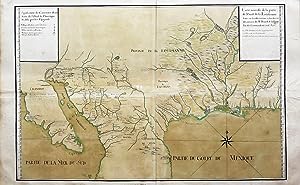
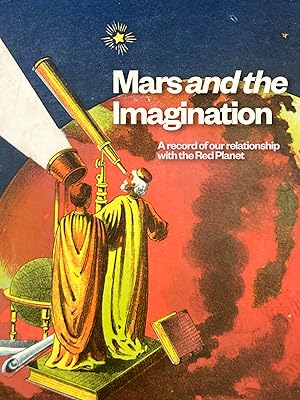
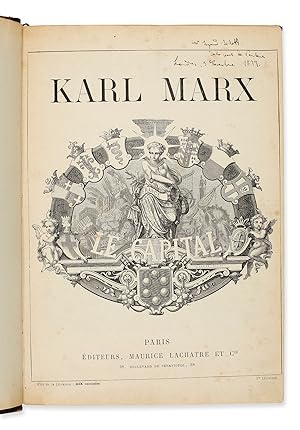
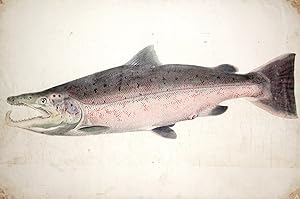
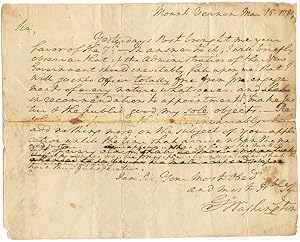
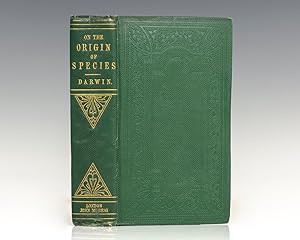
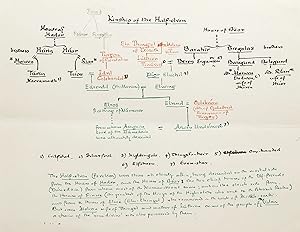
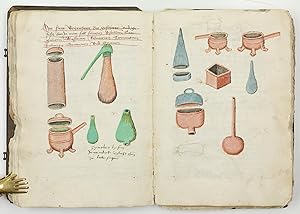
![Image du vendeur pour Theatrum orbis terrarum. [With:] Parergon [And:] Nomenclator Ptolemaicus mis en vente par SOPHIA RARE BOOKS](https://pictures.abebooks.com/inventory/md/md31749516739.jpg)
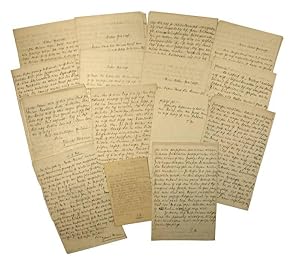
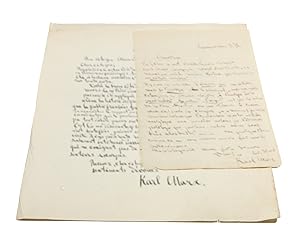
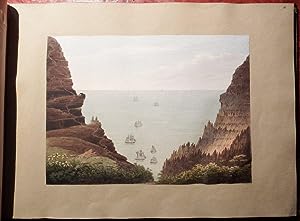
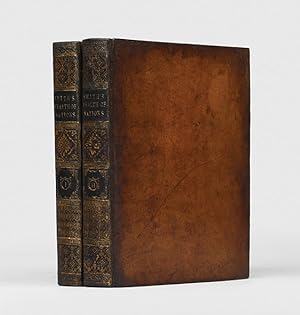
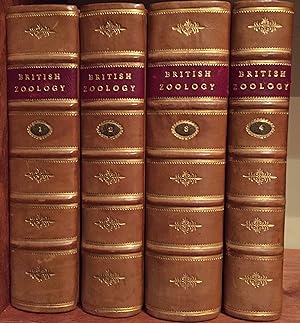
![Image du vendeur pour [Lectura Infortiati]. mis en vente par Antiquariat INLIBRIS Gilhofer Nfg. GmbH](https://pictures.abebooks.com/inventory/md/md31174762324.jpg)
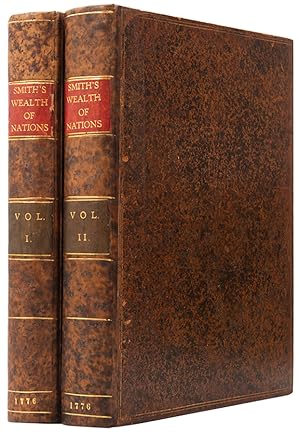
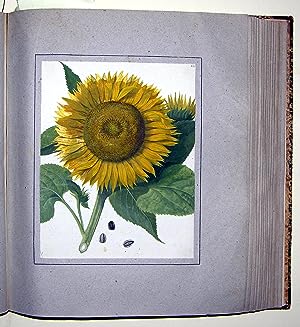
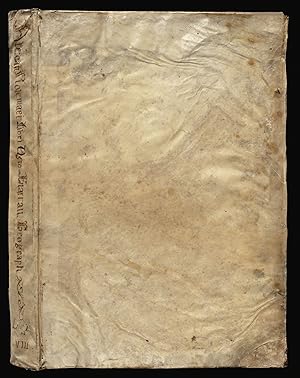
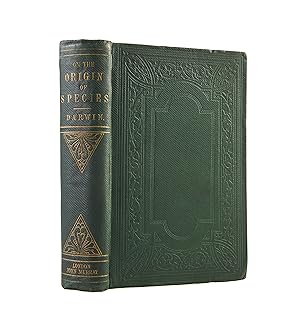
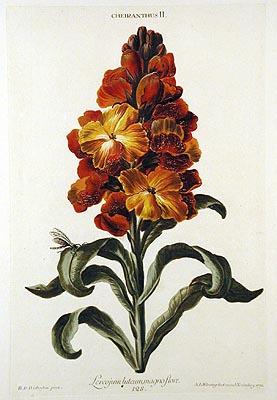
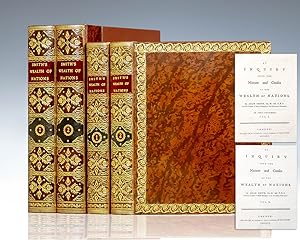
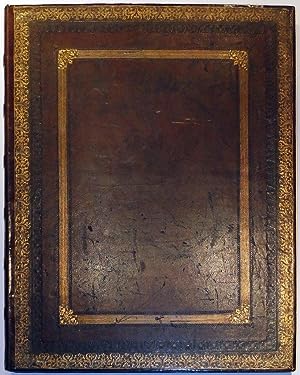
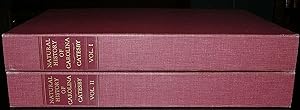

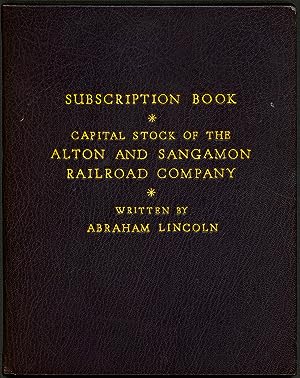
![Image du vendeur pour The Historie of the great and mightie kingdome of China and the situation thereof: Togither [sic] with the great riches, huge Citties, politike gouernement, and rare inventions in the same. Translated out of Spanish by R. Parke mis en vente par Arader Books](https://pictures.abebooks.com/inventory/md/md31505167988.jpg)
![Image du vendeur pour [The Great American Voyages]. Vols. 1-9 plus variant duplicate volumes of IV and VIII, in all 11 volumes, bound in 9. Mixed editions/issues, mixed German and Latin text. mis en vente par Antiquariat INLIBRIS Gilhofer Nfg. GmbH](https://pictures.abebooks.com/inventory/md/md15232629250.jpg)
